




If your clients are self-funding health benefits, chances are they're getting fed up with off-theshelf plans and the lack of transparency.
We’re Pinnacle Claims Management, Inc., a TPA here to simplify health benefits administration for self-funded employers.

Now the first thing you should know about us is that we’re independently, privately owned. Which means we don't have conflicting priorities with a provider network and we don't put EBITDA ahead of service. So we can provide everything the big outfits offer, and tailor it to meet your client's needs.
HERE’S THE BOTTOM LINE ON WHAT WE OFFER:
See what we can do for your clients. pinnacletpa.com Competitive Network
With customizable health plan solutions that improve ROI, we’ve been helping employers keep people covered for almost 30 years now.

TAKE YOUR BUSINESS TO THE NEXT LEVEL!




e-DIRECTORY e-DIRECTORY




4 REASONS TO BE LISTED
4 REASONS TO BE LISTED

BE EASY TO FIND
BE EASY TO FIND
Enable brokers and colleagues to reach you
GET LEADS GET LEADS
Get leads from colleagues and consumers
BE RECOGNIZED BE RECOGNIZED
COLLABORATE COLLABORATE
Show clients you are included in the state's leading e-Directory of life and health insurance professionals Network with brokers, GA's, and FMO's to help you solve client problems
GET LISTED GET LISTED
www.ca-brokerdirectory.com
publisher@calbrokermag.com
Health insurance professionals can find ways to separate themselves from the competition when looking at the Best Practices of trusted advisors.

 Carmen Ponce VP of Client Services and Renewals
Carmen Ponce VP of Client Services and Renewals
No need to open Teams desktop app:
First Wednesday of each month:
May 1 @10am to 11am st
In this webinar, you’ll learn:
Common issues client face when using their health insurance benefits,
Strategies to assist with accessing care to dealing with billing issues,
This and much more.

Wednesday
May 1 @10am to 11am st
Click on link:
https://bit.ly/3vOY9XC
1. When prompted to open desktop application
2. Select: “Cancel” option to open teams app.
3 “Click continue on this browser.”

Cal Broker’s commitment is to be the leading source of news and information for California brokers and agents operating in the health, life, and annuity industry. We are committed to connecting Life and Health insurance professionals to valuable resources and solutions they can provide to their insurance clients. 16

PROFESSIONAL DEVELOPMENT
Letters On Integrity: Helping Professionals Face Conflicts
ByKnowing the trends and finding products to address the evolving needs employees have will help you provide strategic advice to your Employer clients that match employee trends.
By
Russ explains ways to face conflicts and how to use the principles of life skills to help manage conflict in work and life.
By Russ Williams
PROFESSIONAL DEVELOPMENT
Top California hospitals lead the state in breast cancer treatment and are recognized for advancements in care. Inform your clients about these resources in your role as trusted advisor.
By Emma PetersMD or DO—Know the Difference
Information your clients should know and how you can help them use this information when selecting a Primary Care Physician.
By Cal BrokerThe Future of Business Currency for Brokers—How Actual Value and Vertical Integration Combine to Enhance Your Role as the Trusted Advisor
The author outlines the move to focus strategically on employee benefits.
By Joe Buzzello
28 COMMISSION SOLUTIONS
Ric’s Story
All Brokers can learn from the career path and how commission planning can protect and enable a successful future sale.
By Phil Calhoun and David Ethington
30 MEDICARE
Understanding COBRA Options for The Medicare Eligible Agents need a working knowledge and understanding of the COBRA Options and eligibility for Medicare to assist their clients.
By Margaret Sted32
LONG TERM CARE INSURANCE
Other Coverage you Might Explore A third of applicants are rejected from buying long-term care insurance. Here are some smart alternatives.
By Alina Tugend
34 LOOKING FORWARD
The Future Path for Health plans and Alternative Care, Holistic Care and CBD is outlined and reviewed. Learn more about how these often-valuable services can be covered by health plans.
By Dorothy M. Cociu40
COBRA HEALTH INSURANCE
Employer Responsibilities and COBRA -
Knowing your Employer Client’s responsibilities and how COBRA works is important as an advocate for Employers.

When it comes to reaping the rewards of exercise, women may have a leg up.
A new study published in the Journal of the American College of Cardiology found that females may get more benefits than men when doing the same amount of physical activity.
Researchers from the Smidt Heart Institute at Cedars-Sinai in Los Angeles analyzed the physical activity data of 412,413 U.S. adults.
The participants all responded to the National Health Interview Survey database between 1997 and 2019, providing details about the frequency, duration, intensity and type of physical activity, according to a press release from the hospital.
In terms of cardiovascular exercise, the researchers found that men gained their maximum “survival benefit” from doing “moderate to vigorous aerobic physical activity” for about five hours per week.
For women, that same level of benefit was achieved after just 2½ hours of that exercise intensity per week.
Women continued to gain more benefits after that time, however.
Examples of “moderate to vigorous aerobic physical activity” include brisk walking or cycling, the study detailed.
For strength training exercises, men hit their maximum benefit from three weekly sessions, while women achieved the same outcome with just one session per week.
“We found not only that progressively greater amounts of physical activity reduced mortality risk, but also that the amount of regular exercise needed to achieve the same degree of risk reduction was different in females versus males,” said senior author Susan Cheng, M.D., MPH, director of the Institute for Research on Healthy Aging in the Department of Cardiology in the Smidt Heart Institute.
“In effect, women did not need to exercise for as much time as men to achieve the same benefit,” she told Fox News Digital.
“Put another way, for a given amount of time and effort put into exercise, women had more to gain than men.”
Co-lead author Martha Gulati, M.D., director of preventive cardiology in the Department of Cardiology at the Smidt Heart Institute at Cedars-Sinai, noted in the release that women have historically and statistically lagged behind men in engaging in exercise.
“The beauty of this study is learning that
women can get more out of each minute of moderate to vigorous activity than men do,” Gulati said.
“It’s an incentivizing notion that we hope women will take to heart.”
While mortality risk decreased for all adults, it was reduced by 24% for women and 15% for men, according to Cheng.
“We hope that the results of this study will help to motivate females who are not currently engaged in regular physical activity to understand that they are in a position to gain substantial benefit, technically even more than their counterpart males, for each increment of regular exercise they are able to invest in their longer-term health,” Cheng told Fox News Digital.
“Part of what makes females and males different is that when it comes to living longer and living healthier, different types of investments are linked to different types of gains.”
The researchers hope that these findings will help women who may feel too busy or too intimidated to take on a new exercise routine without feeling that they have to compare themselves to men.
“They can be on their own path to success and every bit of progress will count,” Cheng said.
Chris Pruitt, a certified personal trainer with the American Sports and Fitness Association (ASFA) who is based in Maryland, was not involved in the study but said it aligns with observations that women and men may require different approaches to achieve similar health outcomes.
“In my experience, individual responses to exercise can vary widely, and it’s fascinating to see this backed by research,” he told Fox News Digital.
“Biological differences between genders, including hormonal variations and body composition, likely play a significant role in these observed differences,” Pruitt went on.
“Women may use energy or recover from exercise differently than men, leading to these distinct benefits from less exercise.”
This research illustrates the importance of personalized fitness programs that consider gender differences, he said.
“It suggests that fitness advice should be more tailored to the individual’s goals and abilities and their gender-specific physiological responses to exercise.”
The chief limitation of the study is that all physical activity data was self-reported — which creates the possibility for inaccuracies.
“In the future, direct measures of exercise could be analyzed using wearable devices,” Cheng said.
“A very large study of people whose exercise is digitally tracked and measured could one day give us even more detailed information on differences not only between women and men, but also within women and within men.”
“There is still a lot more work we need to do to figure out how to best tailor exercise recommendations to each individual person to best meet their individual needs.”
Josh York, founder and CEO of the New York-based fitness training company GYMGUYZ, reviewed the study and said he does not think the findings should influence people’s fitness routines.
“There are a lot of things you need for good health and fitness, including proper nutrition and a healthy lifestyle,” he told Fox News Digital.
“There are a lot of different variables at play when it comes to assessing a person’s exercise needs and requirements.”
While the study looked at maximal survival benefit, York noted that some people might be motivated by other goals, such as looking a certain way.
“At the end of the day, exercise doesn’t discriminate, no matter your gender,” he said. “You have to put the work in to be healthy. If someone puts more work in, has a healthy diet and lives in a safe environment, they are going to get better results, because physical health is influenced by your habits and mental wellbeing.”
As each individual is different, York said that “sweeping assumptions” about each gender’s exercise needs and outcomes don’t take into account variations in individuals’ circumstances.
“I don’t think people should use this as guidance to reduce their exercise regimens,” he said.
Melissa Rudy is health editor and a member of the lifestyle team at Fox News Digital. Story tips can be sent to melissa.rudy@fox.com.
Earlier this week, Walgreens Boots Alliance (Nasdaq: WBA) CEO Tim Wentworth teased a “strategic review” of the company’s assets, including those within the U.S. Healthcare segment. Meanwhile, CVS Health (NYSE: CVS) CFO Tom Cowhey provided updates on where Aetna may go with its supplemental benefits in the near-term future.
“We are now meaningfully looking at the entire portfolio of assets that we have to ensure that everything we have is going to drive the growth that we aspire to deliver,” Wentworth said Monday at the 44th annual TD Cowen Healthcare Conference.
Walgreens, like CVS Health, is betting a lot on its health care services division.
Walgreens’ U.S. Healthcare segment includes the care-at-home solutions platform CareCentrix, along with the primary care provider VillageMD, which it has invested over $6 billion into over recent years.
“In April, we are sitting down with our board and going through a strategic review,” Wentworth said. “There will not be a big bang after that, where we announce and unveil some incredibly new Walgreens. That will be the starting gun for a lot of work that we have to deliver.”
This comes about a month after Walgreens announced that it had a new leader of U.S. Healthcare.
Formerly, Jeff Driscoll – the ex-CEO of CareCentrix – was the head of that segment. Now, Mary Langowski has taken up the reins. Langowski previously served as the CEO of the managed services organization Solera Health. She also spent time at CVS, where she served as the chief strategy and corporate development officer.
“This doesn’t just happen overnight,” Wentworth
said. “By and large, the broader set of questions that we’ve got to answer will probably take a couple of years to really begin to show fruit.”
CVS Health has a similar segment to Walgreens’ U.S. Healthcare, which it dubs CVS Healthspire.
That includes Signify Health and Oak Street Health, among other assets.
But Cowhey’s most noteworthy comments – which came on Tuesday at the 45th Annual Raymond James Institutional Investor Conference – were around Aetna and supplemental benefits.
Medicare Advantage (MA) plans have the flexibility to offer supplemental benefits through two pathways: the primarily health-related pathway and the Special Supplemental Benefits for the Chronically Ill (SSBCI) pathway.
A benefit that can be provided through both pathways – and once a reason for much bullishness from personal care providers on MA – is in-home support services (IHSS).
While benefit offerings – and IHSS offerings –steadily rose for a few years, plans pulled back in 2024.
Aetna, which is a part of CVS, has still remained mostly committed to home-based care benefits.
That could change, however.
“What are some of the things that we’re going to need to look at?” Cowhey said. “I think supplemental benefits have to be on that list. I think ourselves – and probably all the industry – are going to have to look at all the benefits across the board and decide where it is that we want to cut. But I know that supplemental benefits will be part of that conversation.”

BenefitMall, the largest employee benefits general agency, announces the addition of Christina Davies as the new benefits sales executive for the Northeast Region. The appointment marks a significant step forward in the company’s commitment to serving its brokers in the northeast and enhancing its presence in the region.
Davies brings six years of insurance industry experience to her new role. Prior to joining BenefitMall in February 2024, Davies worked as an account executive specializing in small and large group medical coverage. This experience positions her to understand and address the needs of brokers and small business employers.
“Christina’s dedication to client satisfaction and deep understanding of the ever-evolving benefits marketplace makes her an invaluable asset. Her appointment highlights BenefitMall’s commitment to delivering top-tier support and solutions to our brokers and clients,” said Dave Mascia, regional vice president of the Benefits Northeast Division at BenefitMall. “We are confident Christina will play a key role in our continued growth and success in the Northeast.”
Headquartered in Dallas, BenefitMall is the largest employee benefits general agency, working with a network of 20,000 brokers to deliver employee benefits to more than 200,000 small and medium-sized businesses. Founded in 1979, BenefitMall leverages innovative technology backed by human expertise to provide a seamless selling experience for its carriers, brokers, and their clients. BenefitMall is part of CRC Group’s Life, Retirement and Benefits Solutions division, a leading national wholesale distributor of specialty insurance products.
April 9 @ 7:30am-4:00 pm
CAHIP Los Angeles Annual Conference 2024 Shaping the Future of Healthcare @ Skirball Cultural Center, Register: https://bit.ly/3vlMnUv
May 13-15, CAHIP Capital Summit @Kimpton Sawyer Hotel, Sacramento, Register: http://cahip.com/
June 23-26, Society for Human Resources Management (SHRM24 ) Annual Conference and Expo @Chicago, Register: https://annual.shrm.org/
April 8-10, RSSA Medicarians 2024, @ The Fontainebleu, Las Vegas, Register: https://bit.ly/3IMERFj
April 11 @5:30-10PM, SAHU PAC Event @ California State Railroad Museum 125 1 St, Sacramento, Register: https://bit.ly/4csHQAA
April 18 @10:00am-4:00pm 2024
CAHIP-Golden Gate Symposium @ Lafayette Veterans Memorial Center, Register: https://bit.ly/3TLTaQO
April 18 @ 2:00pm:
SAHU Vanguard Cornhole 2024 @ Le Five 11115 Folsom Blvd, STE 200, Rancho Cordova, Register: https://bit.ly/494Bx38
April 18 @5:30pm-8:30pm
NAIFA Los Angeles 1st Annual Pathway to Excellence Awards Register: https://naifala.org/events/ pathway-to-excellence-2024/
April 22 @ 10:00am-7:00am:
CAHIP LA 27th Annual Take a Swing Fore the Cure Charity Golf Classic @ Aliso Viejo Country Club, Register: https://ocahu.wildapricot.org/
April 25 @9:30am - 12:30pm, Covered California Outreach and Sales hosting annual Special Enrollment Period 2024 Workshops for enrollment partners and stakeholders. Register: https://bit.ly/3vwCxiF
April 26 @2-6pm
Dance Showdown @Four Points by Sheraton 8110 Aero Drive, San Diego, Register: https://sdahu.org/event/ dancing-showdown/
UPDATE: Prop 1 HAS PASSED
By Lynn La CalMattersBut there are already some clear winners — and losers:
Progressives: With Democratic Reps. Katie Porter and Barbara Lee out of the U.S. Senate race, progressives are dismayed by their losses, and upset that Rep. Adam Schiff elevated Republican Steve Garvey during the campaign to consolidate the Democratic vote in November, writes CalMatters politics reporter Yue Stella Yu. Some progressive groups told Stella that having a Schiff-Garvey matchup could backfire — boosting GOP turnout and dissuading young voters of color to vote. But despite Schiff’s tenuous popularity among progressives, it’s unlikely that he’ll lose to a Republican, said one Democratic strategist.
Huntington Beach: The losses continued for progressives and Democrats alike in Huntington Beach, where residents are voting to ban flying the LGBTQ+ Pride Flag on city property and to require voter identification in municipal elections, explains CalMatters Capitol reporter Alexei Koseff. Though the city’s Republican mayor said that “this is the direction that the community has been wanting to go,” the state’s Attorney General and Secretary of State warned city officials that the voter ID proposal ran afoul of state law.
Legislative races: Rusty Hicks, who upset some by not giving up his post as state Democratic Party Chairperson while campaigning, has some catching up to do to finish in the top two in Assembly District 2. And the Villapuduas’ grand plan to both win seats isn’t panning out so well. Assemblymember Carlos Villapudua, a Stockton Democrat, is a distant third in state Senate District 5. Edith Villapudua, who switched from that race to seek her husband’s seat, is also lagging in third in Assembly District 13.
Congress: Assemblymember Vince Fong — a Bakersfield Republican who had to go to court just to run for the U.S. House seat formerly held by past Speaker Kevin McCarthy — has a healthy lead for one of two spots in District 20. Another Republican, Tulare County Sheriff Mike Boudreaux, and Democrat Marisa Wood are locked in a tight battle for second place.
Trump sweeps delegates: As of Wednesday, former President Donald Trump had 79% in the Republican presidential primary, compared to 18% for former South Carolina Gov. Nikki Haley, who suspended her campaign after Super Tuesday. That’s far higher than the 50% plus one he needed to win all 169 delegates, after the state GOP changed its rules to support Trump.
S.F. goes tough on crime: Despite the city’s reputation of being a progressive stronghold, San Francisco residents passed two tough-on-crime ballot measures: Proposition E to expand the police department's use of surveillance and facial recognition technology, as well as loosen reporting requirements; and Prop. F to require those receiving city welfare to be screened for drugs.
Prop. 1: It’s still too close to call whether Californians approve of overhauling mental health policy. Even with Gov. Gavin Newsom’s backing, a nearly $21 million war chest, and an early lead in the polls, voters remain split on rerouting funding to house people with behavioral needs and borrowing billions to pay for treatment bends.
Campaign consultants: They won even if their candidates didn’t. In 60 Assembly races, 20 state Senate races and Prop. 1, consultants have made more than $10.7 million so far this election cycle, Capitol Weekly reports. The next two biggest spending categories: TV or cable airtime and production costs ($10.3 million) and campaign literature and mailings ($7.6 million).
275 million new genetic variants found in US study explain why some are more prone to disease than others
The study analyzed genetic code of the 250,000 US volunteer participants
A study that analyzed the genetic code of a quarter of a million U.S. volunteers found more than 275 million entirely new variants that may help explain why some groups are more prone to disease than others, researchers reported on Monday.
The whole genome sequencing data from a wide range of Americans aims to address the historical lack of diversity in existing genomic datasets by focusing on previously under-represented groups. The U.S. National Institutes of Health-funded "All of Us" study turned up 1 billion genetic variants in total.
"Sequencing diverse populations can lead to new drug targets that are relevant to everyone," said Dr. Josh Denny, a study author and its chief executive. "It can also help uncover disparities that lead to specific treatments for people that are experiencing higher burdens of disease or different disease."
Although many genetic variants have no impact on health, nearly 4 million of the newly discovered differences in the genetic code are located in areas that may be tied to disease risk, the researchers reported in a series of papers published in Nature and related journals.
"This is huge," said Denny. The study aims to eventually collect DNA and other health data on 1 million people in hopes of better understanding genetic influences on health and disease.
Nearly 90% of genomic studies to date have been done in people of European ancestry, which has led to a narrow understanding of the biology of diseases and slowed the development of drugs and prevention strategies effective in diverse populations, the leaders of several NIH departments wrote in a related commentary.
"It's a huge gap, obviously, because most of the world's population is not of European ancestry," Denny said.
Recent studies have already shown how genetic diversity can impact disease risk. Variants in the APOL1 gene discovered in 2010 help account for 70% of the increased risk for chronic kidney disease and dialysis seen in people in the U.S. with sub-Saharan African ancestry.
Likewise, a class of drugs called PCSK9 inhibitors that dramatically lower very high levels of low-density lipoprotein (LDL) - the so-called bad cholesterol - were discovered by sequencing the genetic code of 5,000 people in Dallas of African ancestry.
Much more work is needed to understand how the new trove of genetic variants contributes to various health conditions, but the scientists believe they could be used to refine tools used to calculate a person's risk for disease.
Over the last several years, a notable trend is emerging in home care: Top-tier companies are shifting their focus from prioritizing customers to prioritizing caregivers.
This strategic move reflects a growing recognition of the critical role caregivers play, and aims to address persistent caregiver shortages.
“The trend has always been there, but I think now we’re acknowledging it for what it actually is,” Best of Care CEO Kevin Smith told Home Health Care News. “And the reason for that is rooted — in my opinion — almost squarely in client demand. We know the clients are going to be there. Now the question becomes: What are we going to do to find the people to come and work for our companies and keep them here for a long time?”
The answer is solidifying a more caregiver-first culture, acknowledging that customers will be better taken care of down the road as a result.
Caregiver shortages are a significant barrier to home care company growth. In response to those barriers, executives are tinkering with their approaches by placing greater emphasis on caregiver well-being and satisfaction.
company leaders since it was started in 2011.
“It’s been our mindset since Day One,” Family Tree Private Care CEO Daniel Gottschalk told HHCN. “When our new care providers come to orientation at Family Tree, we make sure that they understand that it is our job to take care of them, so that they can take care of our clients. I think the industry has done a pretty good job of trying to embrace that.”
Family Tree offers concierge-level caregiving, private nursing and care management services in Texas and Colorado.

One way to make sure a caregiver feels welcomed and part of something bigger than themselves is giving them reliable and consistent work.
“The best companies, in my opinion, are going to do everything possible to ensure that a new hire gets out to work immediately,” Smith said. “To me, the employee experience basically begins the moment that the signatures on all of the hiring and employment docs are dry. Because you’re only as good as what you tell people when you’re recruiting them.”
Best of Care is a Quincy, Massachusetts-based personal home care agency. The company has over 400 home care aides, administrative staff, care managers, nurses and move managers.
Making a strong first impression to new team hires is a critical step in setting a foundation of reliability, Smith said.
Communication also plays an important role in the process. Whether it be understanding what workload a caregiver wants to handle, or making sure on-the-job problems are solved in a timely manner, caregivers need to know they’re supported early and often.
“If you want to work 40 hours a week, we’ll get you 40 hours a week right from jump,” Smith said. “If you can’t do that as an employer, they’ve got 10 other options in their inbox. At our company, we are determined to make sure that the people who come in that get hired walk out with a schedule on Day One. And, from there, what can we do to support that person when they have that first question or the first hiccup with a client to make sure that they feel supported in those moments?”
Sometimes it’s difficult knowing if the culture that a CEO is trying to set is resonating with new hires, Smith said.
Recently, as caregivers are onboarded with a variety of backgrounds, needs and wishes, he feels like the message is getting across.
“Looking through our new hires I’ll see a home health aide in Boston who is available on weekdays from 11 p.m. to 7 a.m.,” Smith said. “The next one is available from 8 a.m. to 2 p.m. three days a week. The next one four days a week. What that tells me is that the message is clear: when you apply with us, we’re going to accommodate you.”
At Family Tree Private Care, the caregiver has been at the forefront for
Because the company doesn’t cover a large geographical area, its focus — and most of its success — comes from concentrating on the markets that it’s in. That includes hiring and retention strategies.
“Our entire strategy has been built around depth in markets,” Gottschalk said. “We aren’t in 300 locations like many providers, we’re only in a handful, but we are a big player in a handful of locations. Our stated goal is to become the employer of choice in every single market we serve and that’s what gives us growth. The clients are there, but the care providers are not. So if we can be the leading employer in every market we serve, it gives us a great reputation and a leg up on all the competition.”
This strategy also allows flexibility when making sure its caregivers are top of mind. For instance, Family Tree pays near the top of the market, offers pay advances to its caregivers and has a competitive benefits package.
One of the four core values of Family Tree is to provide outstanding service. A point of emphasis within that core value is that it includes providing outstanding service to its own employees.
“It’s not provide outstanding client service,” Gottschalk said. “As a core value, you don’t look at the client first and the care provider second. You look at them together and they both have to be served. And you have to start with the care provider because serving the care provider well serves the client well.”
The current shift in focus is not something that happened overnight.
“The first time I really started to notice this was in the early 2000s when the caregiver shortage really started to become an issue,” Stephen Tweed, founder of consulting company Home Care CEO Forum, told HHCN. “Then, when the market crashed in 2008, it wasn’t as difficult to find caregivers. Now, over the last few years is when the home care leaders that I talk to have really started to take stock in this idea of focusing on what their caregivers need and want.”
Tweed pointed to a number of companies he’s worked with in the past — like Bayada Home Health Care — as pioneers of this shift.
Whether they’re national brands that have existed for 40 years or up-and-coming providers, one thing that remains consistent in successful companies is a clear and concise set of values.
“Those core values are usually determined by the leader, by the CEO,” Tweed said. “There’s a responsibility to live out those values in order for your caregivers and other employees to act and work with those values in mind.”
In order to succeed in today’s landscape, caregiver satisfaction needs to be at the top of any priority list.
“A caregiver-centric approach to operating and growing a company is — in my estimation — the only way to do it,” Smith said.
For nearly 70 years, VSP Vision™ has been the largest and only national not-for-profit vision benefits company. Founded by optometrists in California in 1955, the goal was simple yet ambitious: bring access to affordable, high-quality eye care to as many people as possible. Six-plus decades later, the leading health-focused vision company serves more than 85 million members – nearly 1 in 4 people living in the United States – through a network of 41,000 doctors.

As the health care and optometric industries have changed over the years, VSP Vision has grown purposefully to meet the evolving needs of the clients and members it serves. What started as a vision insurance company has since grown to include multiple lines of business, including eyewear, retail, ophthalmic lens products and optical manufacturing, practice management software and electronic health records.
To better reflect its evolution, this year the company rebranded from VSP Global to VSP Vision, marking a new era and reaffirming its commitment to care, passion to empower, and promise to reinvest in its stakeholders.
As the early days of the COVID-19 pandemic took hold, the company focused on ensuring its members had access to eye care.
“The reality is medical eye care needs don’t stop just because the pandemic is going on,” said Kate Renwick-Espinosa, president of VSP Vision Care and member of the California Chamber of Commerce Board of Directors. “We knew we could make a difference by helping our members stay connected to their VSP network doctor and not have to go to emergency rooms, which were under tremendous strain.”
In response, the company expanded access to essential medical eye care benefits for its insured members and their covered dependents. They could now visit their VSP network doctor in-person or remotely to get treated for a variety of conditions, including eye trauma, conjunctivitis, and sudden changes to vision.
In addition, VSP Vision harnessed its manufacturing and procurement resources to provide personal protective equipment (PPE) to network doctors and even created face shields that were distributed across the country. It also established a grant program for doctors to provide cash payments up to $10,000 to help offset pandemic-related financial hardships.
One of the clearest examples of the company fulfilling its purpose
of “empowering human potential through sight” is VSP Eyes of Hope. Income, distance, and disaster pose serious barriers to eye care and eyewear for many, but VSP Eyes of Hope removes those barriers by providing the care at no-cost.
More than 3.6 million people in need have gained access to vision care through the program, in collaboration with 8,500 VSP network doctors who participate annually. As VSP Eyes of Hope celebrates its 25th anniversary this year, the company is building on its promise through an investment of $1 million in two key initiatives: enhancing its eye care and eyewear gift certificates and reinvesting in its mobile clinics.
Each year, 50,000 adults and children receive access to free vision care through VSP Eyes of Hope gift certificates, which reimburse VSP network doctors for the services they provide. In response to a growing need for vision care among disadvantaged communities, exacerbated by the pandemic, the frame coverage for the gift certificates is being expanded to make it easier for adults and children to access high-quality care and eyewear from a local VSP doctor.
Since first responding to the needs of the New Orleans community in the aftermath of Hurricane Katrina, the VSP Eyes of Hope mobile clinics have remained foundational to removing barriers to care and helping people experience all that is possible through clear vision. Partnering with local charitable organizations and eye doctors, the mobile clinic staff deliver no-cost eye exams and prescription glasses to communities in need.
The mobile clinics are fully equipped with an eye exam room, portable eye exam lanes, an eyewear dispensary stocked with frames and a finishing lab to produce prescription eyewear for many patients the same day they are provided care.
Recently, the VSP Eyes of Hope mobile clinics partnered with the San Diego County Optometric Society at Monarch School, which provides education and social services for K-12 students experiencing homelessness in San Diego, CA.
“By continuing to invest in these key initiatives, we remain focused on supporting better health equity across the country by increasing access to eye care and eyewear in places where it’s needed most,” said Michael Guyette, president and CEO of VSP Vision.

Washington, D.C. — Maggie Stedt was honored with the esteemed Spirit of Freedom Legislative Award during the National Association of Benefits and Insurance Professionals' (NABIP) 34th Annual Capitol Conference in Washington, D.C.
The Spirit of Freedom Award, a highly sought-after accolade within the NABIP community, is bestowed upon someone who has demonstrated exceptional dedication and made significant contributions to state and federal legislative endeavors. Recipients of this award exhibit exemplary leadership qualities by forging strong relationships with legislators, effectively advocating for public policy reforms, engaging with influential media platforms, and championing grassroots initiatives.
“Maggie Stedt's distinguished four-decade-long career in insurance has left an indelible mark on the industry and the association“, stated NABIP CEO Jessica BrooksWoods. “As the driving force behind the Senior Summit model, a pivotal event tailored for Medicare agents, Stedt has elevated it into a vital platform for legislative discourse and policymaking. Her visionary leadership as the president of both Orange County and the California Agents and Health Insurance Professionals (CAHIP) underscores her unwavering commitment to advancing the interests of the industry and insurance profession.”
“Furthermore, Stedt's active involvement in national committees such as the Medicare Advisory Group highlights her dedication to shaping industry-wide policies and regulations. Her exemplary service and advocacy have earned her numerous accolades and commendations, solidifying her reputation as a stalwart advocate for legislative freedom and reform.”
In recognizing Maggie Stedt with the Spirit of Freedom Legislative Award, NABIP celebrates her unparalleled contributions and steadfast commitment to advancing legislative initiatives that uphold the principles of freedom and innovation within the insurance industry.
NABIP is the preeminent organization for health insurance and employee benefits professionals, working diligently to ensure all Americans have access to high-quality, affordable healthcare and related benefits. NABIP represents and provides professional development opportunities for more than 100,000 licensed health insurance agents, brokers, general agents, consultants, and benefit professionals through more than 200 chapters across America.
Learn more about NABIP-www.nabip.org
The 'Access to Care Act' passed on a party line vote of 34-13.
By Sarah Rumpf-WhittenIllegal migrants would be able to buy health insurance in Maryland under a new bill that recently passed in the state's House and Senate.
On Friday, the Maryland Senate approved the "Access to Care Act" on a party line vote of 34-13.
The Maryland House previously passed a similar version of the legislation on a 10134 vote in late February.
Each chamber will need to vote to approve the other’s before the legislation can be sent to Democratic Gov. Wes Moore.
Ninfa Amador-Hernandez, a policy analyst for the immigrant advocacy group CASA, told Maryland Matters that the bill is a "step forward" to ensure that all Maryalnd residents have access to healthcare.
"Maryland is a home for immigrants, and we see this bill as just another step forward to ensuring that all our Maryland residents have the best access and quality of life and care that they can have," AmadorHernandez told the local outlet.
Sources familiar with the legislation told Fox News Digital that the bill would not add additional costs to Maryland taxpayers.
If signed into law, the legislation would allow undocumented citizens access to purchase health care at the same rate as American citizens.
The measure would also require the Maryland Health Benefit Exchange to submit a federal waiver application by July 1, 2025, to implement the program.
The waiver is needed since there are federal restrictions on undocumented migrants buying health insurance.
The program in Maryland could start as early as 2026, if a waiver is granted.
The Associated Press contributed to this report.
Sarah Rumpf-Whitten is a breaking news writer for Fox News Digital and Fox Business.
She is a native of Massachusetts and is based in Orlando, Florida.
SOURCE: https://www.foxnews.com/politics/ maryland-senate-passes-bill-allow-illegal-migrants-buyhealth-insurance
California no longer has a minimum wage. Instead, the state has 50 minimum wages, differing depending on where you work or what you do.
California was an early adopter of the minimum wage, in 1916 requiring a 16-cent per hour wage for women and children. The California wage floor was extended to men in 1974; it had risen to $2/hour by then.
For the past 25 years, California’s minimum wage has been higher than the federal wage floor. Today, California’s $16 hourly base wage (annually adjusted for inflation) is more than double the federal hourly minimum wage.
But this is only the start. More than a quarter of the state’s population lives in localities with even higher minimum wages: 33 cities in the San Francisco Bay Area, plus Los Angeles, the unincorporated parts of Los Angeles County, San Diego, Pasadena and Santa Monica.
These cities and communities have wage floors that range from three cents to $3.67/hour higher than the state’s minimum wage. Some cities even have wage tiers depending on the size of the business.
But the current municipal champion is the city of West Hollywood, where the $19.08/hour minimum wage is 23% higher than the wage floor in neighboring Beverly Hills. Depending on your perspective, for now West Hollywood has either the glorious or ignominious distinction of having the highest minimum wage in the nation.
Merchants in the city have apparently had enough. Recent reporting found that the minimum wage in West Hollywood climbed by more than $6/hour for small businesses and $5 for larger ones in a span of just 2½ years. Full-time workers get 12 paid days off per year, with part-timers getting prorated time off, and everyone able to cash out unused time upon separation.
The result: desperate employers marching in protest and more than 175 shuttered businesses since 2021. “For God’s sake, give us a break,” said Genevieve Morrill, president of the West Hollywood Chamber of Commerce.
Some local governments under pressure from labor advocates have adopted wage floors for workers in large hotels. Los Angeles, Glendale and Santa Monica have a $19.73/hour wage for covered hotel workers, Long Beach has $17.55 and Anaheim has a wage ordinance aimed at the Disneyland resort area.
Last summer, as strikes engulfed the hospitality industry in Southern California, the Los Angeles City Council considered a $30/hour minimum wage for travel and tourism industry workers. A study conducted for the industry found such an increase would potentially cause job losses, increase homelessness as vulnerable workers are priced out of the labor market, and increase costs for working families and businesses when the full range of affected workers is considered.
But wait, there’s more.
In 2023 the Legislature passed and the Governor approved two laws governing wages in targeted industries, a quantum step insinuating the state deeply inside a company’s balance sheet. The new minimum wages will set an aggressive compensation floor for quick service restaurants and health care providers.
The law aimed at quick service restaurants took a circuitous route. First passed in 2022 to empower a “Fast Food Council” to set wages and impose other working conditions, with few guardrails, it was stymied as opponents qualified a referendum measure for the 2024 ballot. More negotiations followed in 2023, with an agreement that enacts a statewide
hourly minimum wage for workers in quick service restaurants of $20/ hour beginning in April 2024. A new fast food council would revisit the wage annually beginning in January 2025 through 2029, and the statewide wage mandate would supersede any local minimum wages that apply to quick service restaurant workers.
On a separate track, the Legislature in 2023 also adopted first-ever bespoke minimum wages for health care facilities, ranging from $18 to $23/hour beginning in 2024, depending on the type of facility, topping out at $25 to $28 hourly later this decade, with inflation adjustments to follow. These wage mandates will cover hospitals, skilled nursing facilities, dialysis centers, urgent care and surgical centers, community clinics, county facilities, and physicians’ offices. The wage mandate covers not just health care workers, but anyone working any job in those facilities. The wage tiers are based on facility type, size and proportion of patients in rural areas, or participation in government programs.
The inevitable costs of the measures have begun to take shape: the Newsom administration has estimated the first-year fiscal impact of the health care minimum wages will be $4 billion, a hefty sum at any time, much less when the state is facing a $68 billion budget deficit.
In December 2023, Pizza Hut franchises filed notices with the state Employment Development Department that more than 1,100 delivery driver positions would be eliminated, starting in February 2024. News reports attributed the planned layoffs to the upcoming minimum wage hike. Most of the canceled positions were in Los Angeles, Orange and Inland Empire counties with the remaining posts scattered in the Central Valley.
It is notable that the quick service and health care wage floors were exhaustively negotiated with affected industries, in order to avoid more aggressive increases without any protections. Industries and impacted companies negotiated compromises on these two measures that included numerous guard rails like sunset dates, adjustment to exempt salary thresholds, prohibition on additional wage mandates for these industries from local governments, and costly ballot initiatives targeting these industries.
The ambition to ratchet up the statewide minimum wage for workers seems to have no limiting principle: the establishment of a new floor simply means another floor must be built atop it. Just so, a measure has qualified for the 2024 ballot to re-bench the statewide minimum wage from the current $16/hour to a new floor of $18/hour by 2025. (It is unclear if the higher wage floors for quick service and health care workers would be preempted by this measure.)
California is a costly state, and affordability obviously hits harder lowerincome workers and families. But mandated wage increases at any level exacerbate affordability and limit opportunities for potential workers who don’t get jobs or hours in industries hamstrung by high wage mandates.

Parkinson’s disease (PD) is the second-most common neurodegenerative disease in the United States. PD is considered a movement neuro-disorder, meaning that early and dominant symptoms are motor-based such as trembling, rigidity, slowness, impaired balance and coordination, and even quiet voice. While cognitive symptoms like dementia can eventually develop, it is often late in the disease’s progression and the extent can vary significantly. While the exact causes of PD are unknown and absolute cures have not yet been discovered, there are a variety lifestyle choices completely within our control that can be accomplished to significantly slow progression of this disease and enhance overall quality of life. This is vital information for insurance professionals to share with their clients.
A side benefit of many of these forms of exercise is that classes often include shouting which can aid in voice amplification as well.
Neuroinflammation is present in everyone with PD so an anti-inflammatory diet can help to minimize inflammation and the symptoms that arise from it. The Mediterranean diet has been extensively researched as the most anti-inflammatory style of eating. Following this dietary lifestyle includes:

• Fatty fish like salmon or sardines 2-4x per week
• 5 cups fruits and vegetables per day, with emphasis on berries, dark leafy greens, and crucifers like broccoli, Brussels sprouts and cauliflower
• A variety of high quality proteins in 3-4oz portions: pasture-raised poultry/ eggs, grass fed meat
• High quality fats in 1-3oz portions: avocado, olives, cold pressed avocado or olive oil, nuts, seeds
• Lots of herbs & spices
• Minimal added sugar (no more than 5 tsp. added sugar per day)
• In addition to eating mostly whole foods and limiting ultra-processed foods, diet can play a role in improving medication symptoms such as dehydration and constipation. Divide your weight in half to know how many daily ounces of water you need. In one of your daily water glasses, add ½ teaspoon sea salt and 2 Tablespoons lemon juice for adequate electrolytes.

Exercise is one of the most recommended interventions for slowing PD progression. High intensity exercise can significantly improve overall motor function, minimize tremors and improve coordination. Any exercise that increases heart rate to the point of being hard to keep up a conversation is high intensity, and examples include boxing, HIIT and even cycling. A side benefit of many of these forms of exercise is that classes often include shouting which can aid in voice amplification as well. Other types of exercise that are lower intensity can improve balance and coordination, such as choreographed dancing, yoga and Pilates. Exercise is recommended at least 2-3 days per week, with some form of movement including basic walking recommended daily for baseline cardiovascular and cognitive function. Try to find a program with trainers knowledgeable in PD when looking for fitness programs.

Any diagnosis creates chronic stress that can impact sleep and social functioning. People with PD can be especially vulnerable to the impacts of stress and physical symptoms make it easy to stay sedentary indoors and may make social situations difficult. There is no one technique that is better than another for stress resilience, but it is important to find a few strategies that work for you and that you can practice consistently in order to reduce the physical inflammation from stress, enhance the healing that comes with deep sleep, and enhance quality of life with overall life outlook and social interactions. Here are a few techniques to consider:
• Yoga therapy & breath work
• Sound bath or music therapy
• Skill building classes (like art or sewing)
• Massage therapy or watsu in the water
• Tai chi

Megan Wroe manages
St. Jude Wellness Center, an integrative wellness department of St. Jude Medical Center. St. Jude Wellness Center is located in Brea, CA and offers a variety of nutrition, fitness and restorative programs and services for prevention and condition management such as PD. Visit their website for more information: www.stjudewellnesscenter.org

The employee/member benefit landscape has changed over the past decade with the pandemic driving behavioral changes in how employers, fund administrators, benefit advisors, and employees/members view benefits. In fact, according to a BenefitsPRO/Eastbridge Consulting Group survey of voluntary benefits producers, 43% of them noted that the COVID-19 pandemic continues to push people towards new solutions that provide financial protection. Other drivers of voluntary benefits growth have been changing workforce demographics, continuously rising healthcare costs and looming economic concerns. For benefit advisors, new market dynamics demand an enhanced advisory role backed by digital support tools to capture the growing opportunities voluntary benefits present.
In the post pandemic world, we are seeing a heightened focus on voluntary benefits from both employers, benefit administrators and employees/members.
For employers and benefit administrators, there has been:
- More concern with employee/member retention and recruitment following The Great Resignation.
- Changes in their workforces with 37% of midsize employers (100-999 employees), 32% of large employers (1,000+ employees) and 24% of small employers (10-99 employees) reporting hiring more contract/freelance workers (gig workers). (LIMRA and Ernst & Young LLP)
- 69% of large employers, 66% of midsize employers and 45% of small employers reporting they will be offering more benefits over the next five years. (LIMRA and Ernst & Young LLP)
- 82% of employers reported now giving their employees more access to mental health resources. (The Hartford)
Regarding employees/members:
- 29% said that their employers’ benefit offerings meet their needs “Somewhat” and 13% stated “Not too well or not well at all.” (The Hartford)
- Many reported not understanding various benefits “at all,” including, for example, hospital indemnity (18%), accident (14%), critical illness (18%), and disability (13%). (LIMRA and Ernst & Young LLP)
- Many reported their employer’s benefits communications was “not well at all” for such benefits as hospital indemnity (18%), critical illness (18%), and accident (16%). (LIMRA and Ernst & Young LLP)
- They cited various reasons for not understanding their benefits such as insufficient time to make informed decisions (32%), complexity of benefits (28%), ineffective communications (27%), insufficient information (17%), and no access to good advice (13%). (LIMRA and Ernst & Young LLP)
Along with these market findings, there are other factors influencing voluntary benefit markets of which benefit advisors should take note. Today’s
workforce is now multigenerational with Baby Boomers and Generations X, Y, and Z. Each generation has different benefit needs which 40% of organizations with 1,000 or more employees report is a primary challenge. (LIMRA) While boomers focus on securing their retirement, preserving assets in the event of a major illness or disability and caregiver support, the younger generations prioritize achieving financial security, health benefits for themselves and their growing families, professional development, and work-life balance.
Gig workers too have become a major factor influencing voluntary benefit sales. Statista reported that prior to the pandemic, 36% of all U.S. workers or 57.3 million people were gig workers. In 2023, there were 73.3 million gig workers in the U.S., and that number is expected to grow to 76.4 million in 2024. Like other workers, they too are interested in benefits that will offer them greater financial security and family medical coverage which many employers are willing to offer to attract and retain these workers.
This shifting workforce landscape has generated more opportunities in voluntary benefits for benefit advisors. Capturing these opportunities will demand a new strategic and consultative approach to meeting the needs of employers, benefit administrators and their employees/members. It also will require positioning the value that benefit advisors bring to their clients in terms of:
- Improved employee/member benefit cost control,
- Support in navigating benefit complexities including regulatory compliance,
- The ability to leverage data and analytics to help clients make more informed benefit decisions, and
- Support in developing meaningful voluntary benefit programs that help retain and attract employees/members and improve job satisfaction.
If you consider what employees/ members have cited as obstacles to their purchase of voluntary benefits (i.e., lack of access to product information and good advice leading to their not understanding the benefits and which products are best for them), benefit advisors can further enhance their value proposition by taking an increased role in voluntary benefit communications and education – not just during enrollment periods, but year-round. This objective can best be supported with the use of interactive digital tools, often a service of the benefits carrier.
These digital, employee/member
engagement tools, which mirror a real conversation with a benefit advisor and with 24/7 availability, enable an employee/ member to have their questions answered in real-time using advanced software platforms that incorporate Artificial Intelligence (AI) and Machine Learning (ML) technologies. Most of these platforms are not solely focused on just voluntary benefits. They can also help employees/members make better decisions regarding their employersponsored health and retirement plans.
As part of their role in helping clients’ employees/members make sound benefit decisions, benefit advisors should also strive to build their awareness of the actual value of their benefits. Many employers and benefit administrators struggle with this despite believing they are offering a quality benefit program including a suite of voluntary benefits. When benefit advisors develop communications that illustrate the value of various employee/member benefits, they are more likely to increase sales. Costto-benefit can be conveyed by providing statistics on various risks (e.g., sustaining a disability, cost of major dental work versus preventive care, etc.) and how the voluntary benefit helps address the risk cost-effectively versus what the financial ramifications would be of not having certain insurance.
Another area in which benefit advisors can support employers and benefit administrators is in their benefits administration. This highly complex function is best left to a third party administrator (TPA). Advisors, who can effectively articulate the value of using a TPA instead of internal staff, can further enhance their advisory role.
By staying on top of the latest trends in voluntary benefits and what today’s workers want, advisors can be a better resource to their clients, while extending their product sales within an organization. No longer are voluntary benefits confined to those addressing health (physical and mental) and financial needs. Voluntary benefits also encompass identity theft, legal services, pet insurance, childcare, dependent care assistance services, tuition and student loan assistance, and commuter benefits. Based on their analysis of workforce benefits, LIMRA and EY project that nonmedical benefits will grow by 20% over the next five years. Therefore, it is important that those selling voluntary benefits have access to a broad selection of high quality offerings that meet the needs of today’s employees/members.
From benefits education and effective communications backed by digital support tools, to facilitating the outsourcing of benefits administration, marketing voluntary
benefits demands a strategic advisory role which the LIMRA/EY survey found that 46% of all employers want from their benefit advisor. Additionally, over the next five years, 40% of employers with 1,000 or more employees, 44% of those with 100999 employees, and 24% of employers with 10-99 employees expect to rely more on benefit advisors for their strategic advice. It is projected that in the near future, benefit advisors’ business models will shift away from transactional sales commissions toward strategic consulting revenues. Regarding voluntary benefits commissions which have been coming under greater scrutiny, benefit advisors should be transparent for the reporting of commissions over $1,000 on Form 5500, the Annual Return/ Report of Employee Benefit Plan form. Cost transparency is especially important in building client trust and a long-term relationship.
Serving as a strategic advisor entails a much broader, but potentially more lucrative role. Strive to help clients, design sound voluntary benefit plans, and educate and engage their employees/members regarding voluntary benefits. Stay abreast of market trends. Assist clients with their decisions on third party administrators and their valuable role in regulatory compliance. Support their cost containment goals by thoroughly vetting products. By assuming a broader strategic role, benefit advisors can generate greater voluntary sales and consulting revenues.
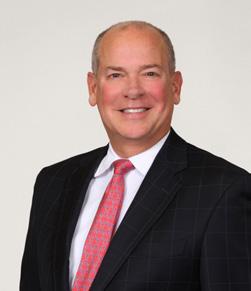
John A. Thornton serves as Executive Vice President of Sales and Marketing at the Amalgamated Family of Companies. In this role, he has broad responsibility for the sales and marketing functions of Amalgamated Life Insurance and the other companies within the family. Additionally, as a member of the organization’s senior executive team, he is actively involved in the operations, oversight and direction of the organization. John joined Amalgamated Life in 2008 in his current role. He came to the Company with over 20 years of experience in insurance sales and marketing. His career includes 16 years serving at CIGNA, where he transitioned from group insurance to health insurance as CIGNA’s Vice President of Sales. He also served as National Sales Manager with Metropolitan Life, a role in which he oversaw the development, introduction and management of an investment sensitive life insurance product.
 By Emma Peters
By Emma Peters
Breast cancer poses significant risks to both physical health and emotional wellbeing, affecting millions of individuals worldwide each year. The Komen Foundation estimates that in 2024 there will be 310,720 new cases of invasive breast cancer, 56,500 new cases of non-invasive breast cancer and 42,250 breast cancer deaths in the United States. One of the primary risks associated with breast cancer is its potential to spread to other parts of the body, a process known as metastasis, which can significantly impact prognosis and treatment outcomes. Additionally, certain factors such as age, family history, genetic mutations (such as BRCA1 and BRCA2), hormonal factors, and lifestyle choices (such as alcohol consumption and lack of physical activity) can increase the risk of developing breast cancer. Early detection through regular screenings, such as mammograms and clinical breast exams, is crucial for identifying breast cancer in its early stages when treatment is most effective. When it comes to breast cancer treatment, California is home to several world-class hospitals renowned for their expertise, innovation, and comprehensive care. In this article, we will briefly discuss emerging breast cancer treatment options, and inform health insurance professionals on the top five hospitals in California for breast cancer treatment so they can prepare their at-risk clients to the best of their ability.
It’s imperative that women get annual screenings done for preventative purposes. The American Cancer Society recommends completing these screenings once or twice a year: “The goal of screening tests for breast cancer is to find it early, before it
causes symptoms (like a lump in the breast that can be felt)”. Other symptoms that can be indicative of breast cancer include swelling of the breast, pain in the breast/nipple area, nipple retraction, red/flaky skin, or nipple discharge. Before these symptoms occur, recommend mammogram screenings to your clients. Early detection for breast cancer is key so that treatment plans can be as successful as possible.
Treatment for breast cancer varies depending on factors such as the stage of the cancer, the presence of hormone receptors, HER2 status, and the individual's overall health and preferences. Common treatment modalities include surgery, chemotherapy, radiation therapy, hormonal therapy, targeted therapy, and immunotherapy. Surgery, which may involve lumpectomy (removal of the tumor and a small margin of surrounding tissue) or mastectomy (removal of the entire breast), is often the first line of treatment for early-stage breast cancer. Chemotherapy and radiation therapy may be used to shrink tumors before surgery (neoadjuvant therapy) or to destroy any remaining cancer cells after surgery (adjuvant therapy). Hormonal therapy, which blocks the effects of estrogen or progesterone on breast cancer cells, is often prescribed for hormone receptor-positive breast cancers. Targeted therapies, such as HER2-targeted drugs like trastuzumab (Herceptin), are designed to specifically target cancer cells with certain genetic mutations. Immunotherapy, which harnesses the body's immune system to fight cancer, is a promising new approach that is being studied in clinical trials for breast cancer treatment.
Here is a list of the top five hospitals for breast cancer treatment in California. This list is based off the 2023 U.S. News report which ranked best regional hospitals on 15 specialties and utilizes objective data (such as data from Medicare) in 12 specialties, including cancer, heart surgery, and obstetrics and gynecology.
1. Stanford Health Care (Stanford, California): Stanford Health Care is renowned for its expertise in oncology and its commitment to advancing the field of cancer treatment. The breast cancer program at Stanford offers state-of-the-art diagnostics, advanced treatment options, and access to cutting-edge clinical trials, ensuring that patients receive the highest quality care available. They were the first to use gene expression profiling to identify molecular subtypes of breast cancer. This groundbreaking work has had a major impact on our understanding of breast cancer biology. They developed some of the first protocols for breast MRI imaging and continue to lead developments in breast imaging for diagnosis and treatment planning. Their intraoperative radiation therapy (IORT) program, combining radiation and surgery in one procedure, was one of the first in the nation. We continue to provide the most advanced IORT services today.
2. UCSF Helen Diller Comprehensive Cancer Center (San Francisco, California): As one of the nation's premier cancer centers, UCSF Helen Diller Comprehensive Cancer Center is known for its cutting-edge research and personalized care. The breast oncology program at UCSF brings together experts from various disciplines to provide patients with the latest advancements in diagnosis, treatment, and supportive care services. The program's translational nature means that laboratory-based work can be rapidly moved into clinical trials. The clinical research of the program includes reducing overdiagnosis, over- and under- treatment, and the burden of cancer therapy through risk assessment to individualize screening and prevention measures, and through improved tumor classification to tailor treatment.
3. City of Hope National Medical Center (Duarte, California): City of Hope is a leader in cancer research and treatment, offering innovative therapies and compassionate care to patients with breast cancer. Its multidisciplinary team of specialists collaborates to develop individualized treatment plans tailored to each patient's unique needs, with a focus on achieving the best possible outcomes. City of Hope uses advanced surgical techniques, including nipple-sparing mastectomies with immediate reconstruction, groundbreaking treatments such as high-precision and intraoperative radiation therapies, and immunotherapies. They implement innovative ongoing research and clinical trials, with over 100 breast cancer alone, promising new therapies and ways to predict benefits from treatment.
4. UCLA Jonsson Comprehensive Cancer Center (Los Angeles, California): UCLA Jonsson Comprehensive Cancer Center is a leader in cancer research and treatment, with a dedicated team of specialists focused on providing personalized care to patients with breast cancer. The center offers a wide range of treatment options, including surgery, chemotherapy, radiation therapy, and targeted therapies, as well as access to clinical trials investigating promising new treatments. UCLA Health research led to the FDA approval of Herceptin®, a leading breast cancer treatment. UCLA Health offers breast cancer care in nearly 20 ambulatory cancer care clinics close to work or home. Community practices are part of the JCCC and offer effective patient-centered care.
5. Cedars-Sinai Medical Center (Los Angeles, California): Cedars-Sinai Medical Center is known for its excellence in cancer care and research, offering a comprehensive range of services for patients with breast cancer. Its breast cancer program emphasizes a patient-centered approach, with a focus on individualized treatment plans, innovative therapies, and supportive care services to enhance quality of life during and after treatment. The Molecular Twin initiative at Cedars-Sinai, designed to personalize cancer treatment by creating virtual replicas based on cancer patients’ biological samples, has expanded to include pancreas, breast and lung cancer. A new high-risk BRCA previvor multidisciplinary clinic, opened last year at Cedars-Sinai, gives BRCA-positive patients screening access and risk-reducing prevention strategies in a single visit. Mutations of the BRCA1 and BRCA2 genes predispose patients to pancreas, prostate, ovarian and breast cancers.
The risk factors of breast cancer are extremely serious, but there are also extensive resources in top treatment facilities in California. Today, there are more than 4 million breast cancer survivors in the U.S alone. Clearly, this disease can only be fought with comprehensive knowledge of both the risks, preventative measures, and emerging treatment options. California health insurance professionals can support their clients in this journey by informing them of potential risks and recommending them to the accredited hospitals mentioned above.

Emma Peters is a media intern at California Broker Magazine. She recently graduated from Point Loma Nazarene University summa cum laude, with a Bachelor of Arts in Literature and a minor in Humanities.

Primary care physicians can be medical doctors (MDs) or doctors of osteopathy (DOs). While physicians with either DO or MD training can provide primary care, there are some differences in education, treatment philosophy, cost, and availability. Learn more about the differences between MD and DO physicians and how those differences affect doctor education and patient care in California. It’s essential that California health insurance professionals educate their clients on these differences, so that their clients can get the personalized help that they need.
Both MDs and DOs complete a bachelor’s degree, four years of medical school, and a medical residency before they can practice. However, the medical school programs for MDs and DOs are different.
MD training focuses on allopathic medicine, while DO programs are more holistic. MDs and DOs may opt for certain specializations. While MDs usually have the scientific training and background to pursue specializations, those with DO training may require additional education to qualify.
In practice, MDs and DOs receive comprehensive training in their specific fields and are qualified to practice medicine once their training is complete. MDs may opt for primary care but often choose specializations, while the majority of DOs work as primary
care and family practice physicians.
The primary difference between MD and DO practitioners is their treatment philosophy. MD programs tend to be allopathic and focus more on the individual systems of the body and treating distinct symptoms. DO programs emphasize the holistic ways the body’s systems are interconnected.
Allopathic medicine is the foundation of MD education and training. This philosophy focuses on diagnosing and treating the patient’s symptoms directly. MDs use modern medical technology, medication, and surgical intervention to provide preventive care, diagnosis, and acute treatment.
DOs, also called osteopaths, differ from MDs in their philosophical approach. Their whole-body perspective considers the full scope of the person’s overall health to promote well-being. They use modern medical technology like MDs but focus on the body's interconnected nature.
Osteopathic treatments also include training in hands-on medical treatment like chiropractic adjustments and massage to promote healing and overall wellness.
The American Association of Colleges of Osteopathic Medicine identifies four tenets as the foundation of osteopathic medicine:
1. The body is a part of a whole person made up of body, mind, and spirit.
2. The body can self-regulate, self-heal, and maintain health.
3. The body’s structure and function affect each other.
4. Effective osteopathic treatment is based on understanding the above three principles.
Costs for treatment from an MD or a DO in primary care are comparable. Differences in cost tend to arise more for specializations versus family practice or primary care physicians.
According to Medscape’s 2023 Physician Compensation Report, specialized medical fields like plastic surgery, orthopedics, cardiology, and urology receive the highest salaries. However, these numbers do not necessarily reflect the cost to customers, as compensation typically includes salary, bonus, and profit sharing.
Thus, the distinction between MD and DO is less important to healthcare cost analysis than whether patients require specialty care. Overall, California has a much higher number of specialists than primary care physicians.
Doctor costs and salaries differ by state, and California is in the top 10 states for doctor pay in the U.S. One of the primary drivers of this trend is supply and demand.
Like many states, California is experiencing a physician shortage. A recent Human Resources for Health study indicated that California tops the list for physician shortages in the U.S. The shortage is only expected to grow worse through 2030.
A 2021 research report by the University of California San Francisco called The State of California’s Physician Workforce found a much smaller number of DOs than MDs in California. Per this analysis, 123,941 licensed MDs were actively practicing in California in 2020 versus 8,634 DOs.
A 2021 study by the California Healthcare Foundation indicates that most physicians who completed medical school or residency in California remained in the state to practice. About 25% of all practicing physicians in California attended an in-state medical school.
Between 2003 and 2018, the number of California MD graduates increased by 4% and the number of DO graduates by 91%. Additionally, three medical schools have opened in California since 2018 — two for MD programs and one for DOs. Based on this data, experts expect the number of doctors practicing in California to increase.
Medical doctor programs are the predominant physician training programs in California and throughout the U.S. California boasts some of the top MD schools in the nation, including the following:
• University of California San Francisco (UCSF)
• Stanford University School of Medicine
• University of California Los Angeles (UCLA) David Geffen
School of Medicine
• University of California San Diego (UCSD)
• University of Southern California (USC) Keck School of Medicine
• University of California Davis (UC Davis)
• University of California Irvine (UC Irvine)
• University of California Riverside (UC Riverside) School of Medicine
• California Northstate University College of Medicine
• California University of Science and Medicine
• Charles R. Drew University of Medicine and Science
• Kaiser Permanente Bernard J. Tyson School of Medicine
• Loma Linda University School of Medicine
Most of the University of California medical schools are part of the UC public school system, except USC Keck School of Medicine, which is private. California Northstate University College of Medicine has faced criticism in recent years due to its for-profit model. Lack of access to federal loans and accreditation issues may make this school riskier for medical students.
As of 2024, California has only three schools with osteopathic doctor training programs. However, matriculating classes range from 135 to 228, contributing to California's ballooning number of DO graduates over the past decade.
• Western University of Health Sciences College of Osteopathic Medicine of the Pacific
• Touro University of California College of Osteopathic Medicine
• California Health Sciences University College of Osteopathic Medicine
The California Health Sciences University College of Osteopathic Medicine was established in 2019 in the hope that trained DO physicians would remain in the area to support underserved communities. Its location in California’s Central Valley is suffering a particular shortage of primary care physicians.
DO and MD physicians receive similar education and training through medical school and residency. The costs for care are comparable, and their philosophical differences do not affect the quality of care or costs for medical services.
While California has fewer practicing DO physicians, the vast majority of DO graduates go into primary care and family medicine, according to the American Medical Association. This makes both MDs and DOs critical to the California medical system, especially in areas facing primary care shortages.
There are many factors that will influence whether your client would be a better fit with a MD physician or a DO physician. In order for clients to get the specific primary care that they need, California health insurance professionals should be informed on differences in training, medicine practice, cost and coverage for MD’s and DO’s in California.
1.The American Association of Colleges of Osteopathic Medicine: "What is Osteopathic Medicine?"
2.Medscape: "Medscape Physician Compensation Report 2023: Your Income vs Your Peers."
3.Human Resources for Health: "Physician workforce in the United States of America: forecasting nationwide shortages."
4.University of California San Francisco: "The State of California's Physician Workforce."
5.California Healthcare Foundation: "California Physicians: A Portrait of Practice."
6. American Medical Association: "DO vs. MD: How much does the medical school degree type matter?"
“The truth is that our finest moments are most likely to occur when we are feeling deeply uncomfortable, unhappy, or unfulfilled. For it is only in such moments, propelled by our discomfort, that we are likely to step out of our ruts and start searching for different ways or truer answers.”
— M. Scott PeckI am confident you know Tom Hopkins, world renowned motivational speaker and salesman extraordinaire. I once attended a seminar when Tom told the story of a career low point, failing to meet a monthly sales quota. His boss came into his office saying, “Let me take you out for a drive…freshen things up a bit.”
Two miles out from the office, his boss pulled his car over to the shoulder of the road. He said to Tommy, “Get out. As you walk back to the office, make cold calls on ten new companies that are on your path.” Stunned, but up to the challenge, Tommy did just that! Late that afternoon he returned to the office energized with new business possibilities.
There is a life skills principle that can be applied to our professional world when we must manage the discomfort of perceived or real failure. The principle is: Use troublesome, negative feelings to move you to positive, constructive action. Discomfort is a powerful teacher. It comes to us first as emotion. But the purpose of discomfort’s unsettling emotion is that it can be used to elevate thought processes and decision-making to take on positive, productive action.
Handling conflicting emotions for positive outcomes is difficult, individually and in a group. But there is a simple prescription: Take each and every sour lemon event as an opportunity to turn it into sweet lemonade moment by transforming negative feelings into ethical actions that create results showing that transparent, ethical values were in play to influence for good.
Discouragement arrives as a useful teacher this week. When I find myself or an associate facing the conflict of perceived or real failure, I use the lesson of discouragement to reveal that clarity of action can be practiced. I will not use discouragement to bring pain or ill-will to others. My ethical clarity guides me to make lemonade out of lemons as I use discouragement to guide me and others to pursue the Better Way.
Journeying with you...inspiring ethical excellence!
Russ Williams“Russ works with and understands the Journey Cal Broker subscriber's travel. His focus is to inspire ethical excellence! His inspiration to help our subscribers comes from his father. Russ’ father was a highly successful licensed life and health insurance professional with many satisfied clients.” states David Ethington.
If you are looking for a fresh approach to improve your business and client relationships in 2024, reach out to learn more about how The Clarity Conversation can help you. Russ Williams has worked with hundreds of professionals to discover ways to find new solutions and move your dealings with people to mutually greater significance. If you are up to explore and refine your approach to people and tough career situations, Russ can help. He has numerous satisfied professionals who have experienced the benefit of The Clarity Conversation in their personal and professional life. Here’s the information you need—

Russ Williams contributes articles on professional growth for readers of California Broker Magazine. He serves as a mentor advisor and offers oneon-one professional consultations based on The Clarity Conversation, a 9-Session Self Renewal Consultation focused on overcoming nagging personal-professional challenges to re-claim personal-professional clarity renewing your influence for good at home, at work, and in the community.
To set up your 2-month Clarity Conversation Consult Contact:
Russ Williams centerjcce@aol.com 949-254-5205


Whether you’re busily engaged in your personal-professional life or experiencing your retirement years, take 2-minutes to read about an opportunity that might interest you...to claim your quietly held desire to renew...YOU. “Do

“Our agency is different. We handle their health plan and provide great service. We send them a turkey at Thanksgiving. They’ll never leave us.”
We hear some version of this often from agencies, and it’s simply not enough anymore. Great service is expected…not a differentiator. Neither is bringing them the same small, stale bucket of commoditized plans, rates, etc.
This lazy approach isn’t enough to propel you into the future. You’ll need a stronger form of business currency to scale your book of business.
You’re in a crowded space—one where your commissions/fees can be wiped away with a stroke of a pen. You must think carefully about how you’re POSITIONED now with your clients—more importantly, how they perceive your actual value as it relates to their business.
In this article, we’re going to focus on two big ELEMENTS that comprise the new currency, Actual Value + Vertical Integration.
We’ll define each factor and how they’ll make you almost irreplicable, but first, we want to have you ask and answer an important two-part question:
How are you currently being VIEWED by your clients, and WHO are your points of contact inside of those client groups?
Are you being seen as just a salesperson, a vendor, a broker, or instead, are you being perceived as much MORE than that?
"You're in a crowded space-one where your commissions can be wiped away with the stroke of a pen"
Secondly, WHO are you truly CONNECTED with inside of your client groups? Are you working at the mid-level—HR, controller level—or have you created key relationships at higher levels with founders, partners, ownership, etc.?
We want you to move from the vendor/broker category to a place where your clients wouldn’t ever think of replacing you. And we want you to forge that kind of relationship at MULTIPLE levels inside of the organization you serve.
Let’s break these two elements down, then show you how they work together.
Our first prompt is for you to intentionally move to the category of TRUSTED ADVISOR. You accomplish this by doing the following on a regular basis:
Check-in OFTEN with each of your points of contact (POCs)
Make sure you’re providing them VALUE each time you touch them
Provide EXCELLENT service (All of the time)
RETURN all of their calls or emails, quickly REFER business to them if possible THANK them often!
Give them NEW INFORMATION about their/your industry, etc.
Take NEW BUSINESS IDEAS to them—acting as a thought partner
INTRODUCE them to your vetted partners as opportunities arise
Provide NEW OFFERS to them on a regular basis
Only the last ONE of these ten bullet points speaks to additional revenue for you DIRECTLY. Think of the balance of these prompts as “positioning” strategies for the relationship.
“Vertical integration” is a marketing-related phrase used to describe the way you can CAPTURE an account, so that the client can’t easily defect. It is the process of making new products/services of value available to the business and their employees. (Ancillary, voluntary, etc.)
As the proven theory goes, if you offer just ONE thing to a client (and especially a commodity like health insurance) you’re easy to get rid of. However, if you represent one more product, service, or area of value, you aren’t TWICE as hard to dump, you are several times harder to get rid of. But wow, if you handle three, four or five additional areas, you become exponentially tougher to replace.
And then…
When you combine the act of becoming of ACTUAL VALUE (a trusted advisor), to them along with the practice of intentional VERTICAL INTEGRATION…
…how in the world would they ever want to (or need to) replace you?
And this just addresses the retention side.
When you’ve embedded yourself as a trusted advisor inside of an account, you’re going to receive something far better than a referral, you’re going to be walked into multiple new client opportunities via highly qualified WARM INTRODUCTIONS.
So, where are you at now?
What form of business currency are you leveraging to scale your book of business?
Are you sending them a turkey each november, and then just kicking back, hoping they don’t sign a B of R with the next person that walks in the door?
Or are you working to become a true trusted advisor to them, and then also executing on an intentional strategy to vertically integrate each account—bring multiple ancillary and voluntary products of value to the table?
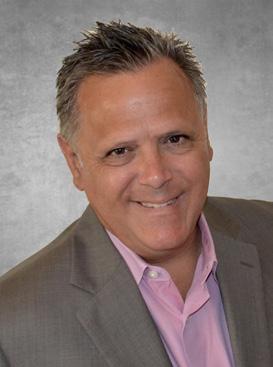
Joe Buzzello is the Co-Founder of mentumm –training for scaling insurance agencies. He’s built 100-million-dollar agencies from the ground up and served in executive roles for Fortune 500® companies. Joe is a six-time published and bestselling author.
He created The CAP Equation® sales and leadership methodology currently utilized by over 250 agency teams.
Contact:
Joe Buzzello
Joe@mentumm.com www.mentumm.com
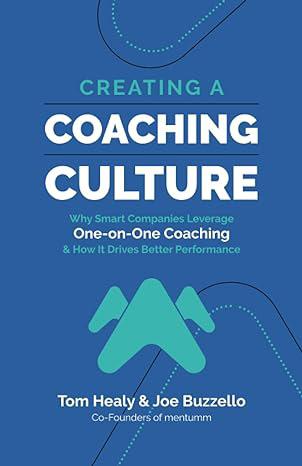
In order to achieve this, they spend significant time, money and resources providing their team with “learning and development” opportunities. Unfortunately, these initiatives rarely produce an ROI because they are not customized and personalized for each employee.
In this book, Tom Healy and Joe Buzzello will share how they have helped hundreds of companies build a coaching culture that drives real results.
You will understand how your people actually learn, the benefits of a coaching culture, how to create one inside your organization and specific ways to measure the ROI.
Those that create a coaching culture build winning teams, experience better results and significantly grow the value of their company!
All Brokers can learn from the career path and how commission planning can protect and enable a successful future sale.
By Phil Calhoun and David Ethington
Ric worked with our team to develop a plan to exit the insurance business. He built a book of business over a period of ten years. Ric presented Medicare 101 classes, did mailers, and worked his clients for referrals. This was a third career for Ric as years before he helped build two businesses in the tech industry and then sold each one.
With Medicare he knew he could find a way to help people which he placed great value on doing good works for others. Because he had recently enrolled in Medicare, Ric became connected with the topic of Medicare education. His experience with the process to learn about Medicare led him to understand what worked and what did not work. So, from personal experience, he had a “feel” for what people turning 65 needed to know.
Ric took this information and worked hard to get familiar with the many parts of
Medicare and how the benefits worked; what the coverage issues are critical to understand; and knew he would be paid fairly for this work. From his experience with growing other businesses and selling them, Ric seemed to have the extra knowledge needed to build his book and plan for his exit some day in the future.
Ric was introduced to our team about five years ago. Ric is an engaging person and was eager to learn more about our process to help brokers make the transition from successful Medicare professional to retirement. Afew months after meeting us Ric made the often difficult decision to move to find a buyer. Ric had a strong command of the key points a seller must consider when looking to work with a buyer.
This time when we met with Ric, he essentially interviewed us. His tough questions were evidence he had studied how books of business are sold. He started with questions about the factors that make the greatest impact on him as the seller, including: How does retention of clients work and what is the track record? Have you purchased a Medicare book of business before and can I speak with the seller? What is the process you use to successfully help my clients with their questions and concerns throughAEP? What happens if a carrier does not transfer commissions?And, How is the accounting done monthly to generate payments to your sellers?
We shared with Ric how our policy on handling questions about our capabilities to transfer both commissions and new client relationships is to be professional and work with the seller to mirror the client process they have found to work best. Finally we emphasized how we need to be available to all clients and over communicate what we will do for them and when we will connect to handle their request. Then we explained that the processes to manage the transfer of commissions is based on experience and a solid relationship with each carrier such that they understand the work we perform for health insurance professionals and how we both focus on what is best for the people involved, their health plan member and our new client.
We explained that the process to manage the transfer of commissions is based on experience and a solid relationship with each carrier such that they understand the work we perform for health insurance professionals and how we both focus on what is best for the people involved, their health plan member and our new client.
You can learn more about how Ric approached his potential buyer and once he made the decision to move forward on this short video with a Q&A where Ric answered a few questions.
We continue to enjoy our work with Ric. Mostly we are proud that Ric appreciates the work we performed over the past four years. We know the majority of his former clients are still with us so we all appreciate this and the continued ability to compensate Ric per our agreement.
Our newest video is the recording of Rics's journey to retirement. link
If you have questions about your next steps in your health insurance journey and would like to learn more, please consider a fifteen-minute call with one of our commission planning experts.
If you want to follow our commission solutions content which includes more of our work with Brokers who successfully have retired from the business, you can join the next webinar which is scheduled for the third Thursday each month at 10AM each month through September.

Phil Calhoun MBA is a board member of the Exit Planning Institute Orange County Chapter, he owns Integrity Advisors. Integrity Advisors is a health insurance agency which specializes in educating health brokers on the importance of commission protection. Commission Solutions is a program offered by Integrity Advisors.
Phil’s Calendly https://calendly.com/ healthbrokersguidetocommissionprotection phil@commission.solutions 714-664-0311

David Ethington is VP of the Medicare Division and director of Broker Relations with Commission Solutions, part of Integrity Advisors. David is an expert in the process to acquire and transfer health commissions. He has trained numerous brokers in commission education and he built the commission transfer planning module for Medicare commissions which is provided to our broker colleagues His work has excelled due to his commitment to providing the best service to both health clients and health brokers. David respects the hard work it takes to build a book of business and enjoys working with retiring brokers and their families. He serves as the CAHIPOrange County VP of Membership. David has participated in the commission protection process for seven years. He’s also involved in acquisitions, especially in the broker relationship transfer of commissions. David lives in Orange County with his wife and their cats. He is an avid runner and completes several long-distance events annually.
David’s Calendly https://calendly.com/david-3171 david@commission.solutions 714-664-0605

A typical fifteen-minute health broker call we held recently went like this:
“I find it hard to think about a plan to leave the insurance business. Mostly when I find some time to slow down and think about the future I have concerns about my personal finances. My mentor said to just get a lump sum payment. Is this a good idea?”
Our response in these cases is "It is important to consider how much you will keep after taxes. The taxation impact can be huge. Also a lump sum usually has risk for the buyer and the amount paid in this case is lower due to the risk. Compared to a payout over time which can be 33% higher a lump sum payment comes with costs. If a book of business totals $100,000 annually and is sold for two times annual gross revenue in a lump sum arrangement, the seller is paid $200,000. The tax is as high as 50% so the net amount would be $100,000 in this case. Compare this to the offer of three times paid out over six years, $50,000 a year. Most tax professionals can advise how to write expenses off each year so for the six years expenses are taken out of the payout before taxes. The result is the taxable amount is much lower and the benefits to the seller becomes part of the total picture. The payout over time option compared to the lump sum option where the seller keeps about 50% of the total, is clearly a better choice. But there is more, any increases in commissions can be included in the seller’s payout when negotiated but is lost in a lump sum payout. Also, for a seller who continues to get referrals, they can negotiate that these referrals, when sold, will be included in the payout. So with commission increases due to organic growth and referrals, the seller can end up with a higher payout monthly over time."
Agents specializing in the sales/enrollments into Medicare Supplement Plans, Stand Alone Prescription Drug Plans, and Medicare Advantage Plans need a working knowledge and understanding of the COBRA Options and eligibility for Medicare Parts A and B to assist their clients.
Your role as an agent is to provide information and to guide the Medicare Beneficiary in the process in relation to their Medicare eligibility and enrollment. They need to access their resources with Social Security and the COBRA Administrator. You cannot directly work with Social Security on behalf of your client. You may assist clients with Medicare Enrollment as a Trusted Advisor and certainly help them to enroll into a plan that best fits their needs and continue to be their servicing agent!
The COBRA (Consolidated Omnibus Budget Reconciliation Act -1985) along with being eligible for Medicare is often misunderstood. Typically, when terminated, an employee’s group coverage will continue to the last day of that month. The employee and their dependents will be eligible for COBRA starting the first of the following month. There can be exceptions, particularly with large group (over 100 employees) and self-funded plans. Employees need to confirm coverage with their Human Resources Department.
The employer is not required to give them any grace period or notice that coverage is ending. Employers are required to give them their COBRA rights. If they have the option of COBRA and were cancelled mid-month, COBRA would be retroactive and seamless to that date.
If the group coverage is cancelled completely, or the company is dissolving, there is NO COBRA. There are challenges with a midmonth cancellation, because individual and Medicare plans typically start on the first of the month.
Underage beneficiaries may continue on the COBRA separately from the terminated employee. Note that underage disabled dependents not on Medicare should apply for Part A and B if eligible. Medicare-eligible beneficiaries should enroll in Part A and B of Medicare. Medicare entitlement followed by the termination of employment within 18 months of entitlement entitles the spouse and dependents to 36 months of coverage from the date of Medicare entitlement. For extended COBRA coverage refer to specific state rules.
The Medicare-eligible person may continue COBRA after signing up for Part B. If the COBRA plan is not creditable for Part D, there are penalty risks involved for Part D coverage and possible delays of coverage. A person must be allowed to enroll COBRA if they already have Medicare prior to enrolling.
The way that COBRA and Medicare coordinate depends on the form of insurance the individual had first. Specifically, whether the beneficiary can have both COBRA and Medicare depends on which form of insurance they have first. If the individual has COBRA when they become Medicare eligible, COBRA coverage usually ends on the date the beneficiary begins their Medicare coverage if the plan standardly terminates coverage.
Beneficiaries may be able to keep their COBRA coverage for services that Medicare does not cover. For example, if they have COBRA dental insurance may be allowed to drop medical coverage but may continue dental coverage for as long as they are entitled to COBRA.
Beneficiaries are not entitled to a Part B Special Enrollment Period (SEP) when COBRA ends.
Group Plans may (but are not required to) terminate coverage due to Medicare Enrollment after COBRA is elected. If the individual has COBRA when they become Medicare eligible, their COBRA coverage usually ends on the date the beneficiary begins their Medicare coverage if the plan standardly terminates coverage.
If the employee/dependents have Medicare Part A or Part B when they become eligible for COBRA, they must be allowed to enroll in COBRA. Medicare will be their primary coverage and COBRA coverage is secondary. Note that former employees should keep Medicare because it is responsible for paying most of their health care costs.
If employee/dependents are eligible for Medicare due to ESRD, COBRA coverage is primary during the 30-month coordination period.
Employees should contact the COBRA Plan Administrator for more information.
If a person turns 65 while on COBRA, he/she has 7 months to enroll in Medicare Parts A and B without a penalty (Initial

Enrollment). The COBRA administrator could disenroll the eligible individual with notice.
A thorough understanding of an eligible person’s needs should be discussed when considering enrolling in COBRA with Medicare. Although enrolling in Medicare and a Medicare Supplement or Medicare Advantage Plan can be less expensive than COBRA, there are reasons a person may want to remain on COBRA, plus enroll in Part A and B. Some of these reasons may be that the person is taking an expensive drug that may be covered on the COBRA plan’s formulary but may not be available through a Medicare Plan’s Part D coverage.
Another reason may be that the person has a chronic medical condition and the attending physician does not accept Medicare but does accept the COBRA plan.
In most states, for an eligible person to enroll in a supplement plan, the individual would need to enroll within 6 months of Part B’s effective date, even though a person has a 7-month window to enroll in Medicare if turning 65 while on COBRA!
If an actively working person develops End-Stage Renal Disease and enrolls in COBRA, COBRA will pay first during the initial 30 months of COBRA enrollment. From the 31st month forward, Medicare pays first.
Such an individual, regardless of age, is eligible for Medicare the month after the diagnosis. It is strongly advisable for such a person to enroll in Part A and B.
COBRA and individual coverages are not “creditable”, so staying enrolled in the plan and not enrolling in Medicare when eligible may result in a delay in enrollment into Part B of Medicare and subject the individual to a Part B penalty. Additionally, if not creditable for Part D, then the Part D penalties may apply.
If enrolled in Parts A and B and in a COBRA plan, Medicare is primary.
An individual may stay on COBRA as long as they do not obtain a secondary insurance plan and do not become covered under their new employer's health insurance.
Veteran’s coverage is considered “creditable” for Part D coverage but not for Part B. Beneficiaries enrolled in both VA and Medicare coverage can receive treatment under either program. Medicare and VA coverage can’t pay for the same service.
Resources:
There are some great resources that you can access to understand more about COBRA and Medicare using the www. Medicare.gov website. For example:
“Medicare and You Guide 2024”
“Who Pays First”

MAGGIE STEDT C.S.A, LPRT, is an independent contractor/licensed agent and consultant. She is a certified senior advisor and lifetime member of NAHU’s Leading Producers Roundtable at the Soaring Eagle Level. She has over 40 years of experience in essential areas of the insurance industry including sales and sales management, product development and product management.
Maggie currently serves on the NAHU Medicare Advisory Committee. Founder of the annual Senior Medicare Summit, attendance grew from 200 in 2010 to close to 1,000 attendees in 2022. She served as past president of CAHIP; NAHU Region 8 Membership Chair 2014 –2018 and past president of OCAHU, serving two terms.
Contact:
maggiestedt@gmail.com

A third of applicants are rejected from buying long-term care insurance. Here are some smart alternatives.
By Alina TugendLong-term care insurance isn't for everyone. About a third of applicants are rejected, and that number is 40% for people ages 65 to 69, says Tom Beauregard, founder of HCG Secure, in Goshen, Conn., which develops and sells long- and short-term care insurance. "A good percentage are going to get rejected based on medical history, and a good percentage are going to look at the premiums and say, 'Well, that's unaffordable,'" says Beauregard. If you don't qualify for a plan or can't afford one, there are other options you might explore, including these six.
Some employers offer long-term care insurance as an employee benefit. These plans accept people with health conditions even if they were disqualified from buying an individual policy.
There are a number of ways to link long-term care to deferred annuities. One way is a deferred fixed annuity with a long-term care insurance rider. With this option, once you demonstrate that you can't do two of the six activities of daily living, such as bathing or feeding yourself, the rider can be tapped, increasing the annuity payout typically by two to three times, says Marc Glickman, an actuary and chief executive officer of Los Angeles-based BuddyIns, which sells traditional and hybrid long-term care insurance.
In some cases, depending on the annuity and the type of longterm coverage, you don't need to qualify for it medically, so this may be a good choice for people with uninsurable chronic illnesses. But you do need a substantial sum of money available to put into the annuity, typically $100,000 or more.
A less expensive option, which is not available in all states, is a short-term plan. It only covers care for a year or less, up to a daily or weekly limit, Glickman says. "The reason people are using it is because they can't qualify for traditional long-term care, and they'd rather get the first year covered than not have any insurance at all," he adds.
The plans can be a particularly good option for someone who is ineligible for long-term coverage because of poor health or is age 75 and older or a single woman. Unlike long-term care plans, shortterm care insurance does not charge more for women. A 65-year-old man or woman could pay $63 a month for home care benefits of up to $1,050 weekly. The cost rises the older you are and the more robust the benefits, according to the American Association of LongTerm Care Insurance. Because many short-term care plans have no elimination period before the benefits kick in, the insurance can be used to cover the waiting period before a traditional long-term care policy will pay out.
Some life insurance policies let you pay for care by tapping the death benefit while you're alive. A policy with accelerated benefits may limit the amount you can draw down to 70% to 80% of the maximum death benefit, but some companies let you take it all, says Robert Eaton, principal and consulting actuary with Milliman in Tampa, Fla.
On your own or with the help of a financial planner, you could determine how much money to set aside for long-term care in a retirement or investment account. "Look at which investments you want to tap first to pay for your care. You need to put a plan together now, not when it happens," says Brian Gordon, president of Murray
A. Gordon and Associates, a long-term care insurance broker in Bannockburn, Ill.
Or perhaps you should consider moving to the state of Washington. In 2019 the state became the first in the country to pass a law imposing a mandatory payroll tax that will fund up to $36,500 in benefits for individuals and cover an array of long-term care costs starting in 2026.
The law has been met with a lawsuit and fierce opposition, which delayed parts of the state program's implementation. Nonetheless, a number of states are watching Washington's situation closely, says Howard Gleckman, a senior fellow at the Urban Institute. "I think inevitably we will have a social insurance public long-term care program, either state by state or at the federal level," Gleckman says. "It's not going to happen soon, but it's inevitable we'll have to do it because it's an expense that's getting out of control."
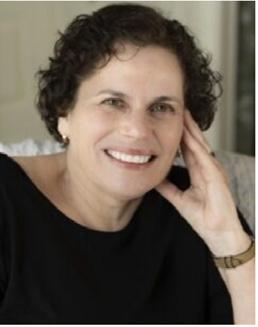
Alina Tugend is an experienced journalist who writes regularly for the New York Times, the Chronicle of Higher Education, Kiplinger and other national publications; from 2005-2015 she wrote the biweekly column Shortcuts for the New York Times business section. Known for taking complex issues and making them accessible and conversational - she looks behind the usual cliches and common assumptions to show how people really think and act and what that means.
Areas of specialties include national and international education trends, personal finance and consumer behavior and retirement issues.
Contact:
Alina@alinatugend.com www.alinatugend.com/
California Broker is pleased to have a collaborative relationship with Buddy Insurance, a leading long-term care insurance education, marketing and technology company. CEO Marc Glickman and his specialists collaborate with health and life insurance professionals to help design LTCi options. Learn more about LTCi and how to refer clients or learn how to write your own LTCi policies using industry leading processes.
LTCi PORTAL HERE: www.buddyins.com/calbroker

Irecently interviewed someone for my weekly podcast series, Benefits Executive Roundtable, on Holistic and Alternative Medicines in Healthcare (S5 E12), including the use of CBD and similar cannabis plant-based products. This particular podcast episode prompted me to do some more research and write this article, as this is an emerging healthcare science that could save health plans money and plan participants some pain and suffering, if more people had access to these products and methods. I then recalled various conversations I’ve had with my technology and HIPAA Security partner, Ted Flittner, of Aditi Group, who has been a long-term user of alternative medicine for the past twenty years, and asked him to give me an end-user perspective of alternative healthcare, nutrition and natural supplementation, from his perspective.
Currently, there is access through legal dispensaries, health care providers and other means, but the cost is 100% outside of your health plan. This can be very expensive and can restrict certain populations that may need and want these products and services. Is there a path towards future health plan coverage for alternative and holistic medicines like CBD and similar products? Let’s examine that together.
First, I want to thank my podcast guest, Elisabeth Mack, who inspired me to write this article. She is an owner of Holistic Caring (HC) and The Green Nurse (GN) in Southern California, and as an RN, BSN, BA since 1987, who worked in hospitals until 1996, then completed her MBA in Healthcare Administration. She has also worked in the insurance industry, with her last post at Anthem Blue Cross as a Regional Sales Manager in San Diego. If you listen to the podcast episode, you will know instantly of her depth of knowledge and passion for what she calls Holistic Caring. When I asked her to tell me about her business, she said “We are running what I call an Ecosystem – a CBD & Cannabis HMO where we provide the HC programs, GN services, and needed to have a pharmacy, so we purchased Bloom Hemp CBD in June, 2023. Bloom Hemp is USDA Organic Hemp CBD grown in Evergreen Colorado, with 21 SKUs and 30 products that are expertly crafted and symptom-targeted formulations. With 8 tinctures, 6 topicals, 2 gummies, 2 capsules, and 3 isolates, we can fill the needs of patients new to cannabis and help people nationwide ‘heal without the high’.”
At Holistic Caring and The Green Nurse, they have what they refer to as “’a dynamic double delight’ – Holistic Caring is the online educational program(s) for patients and professionals, and the Green Nurse is the one-to-one nurse coaching for patients and mentoring services for nurses,” commented Elisabeth. “We run the academy to train the nurses, and then we put them to work seeing patients in their own practice or through our own shop. We bridge the gap between cannabis and conventional medicine for people by providing the pertinent research and initial titration protocols on all products, so that patients can be successful in practical application.”
Second, I want to thank Ted Flittner for giving me his thoughts on this topic, for a less technical and real-world perspective, which we will dive into shortly.
Before we go further, let me back up and provide some additional background and information gathered from my research. CBD and other cannabis products in some form are legal in approximately 47 of 50 states, but there are many variances state-by-state on the sales, the percentage of THC, and more.
CBD, incidentally, is short for cannabidiol, which is a nonpsychoactive compound found in the cannabis plant. For the most part, CBD is legal on the federal level, provided that it contains less than 0.3% of THC.
CBD is fully legal as of this writing in, from what I can gather, Alaska, Arizona, California, Colorado, Connecticut, the District of Columbia, Maine, Massachusetts, Michigan, Montana, Nevada, New Jersey, New York, Oregon, Vermont, Virginia, and Washington. In addition, CBD is conditionally legal in the remaining states, meaning that it may be legal under certain circumstances, such as for medical use or with a prescription, but otherwise it could be considered illegal.
Not surprisingly, California has been at the forefront of efforts to liberalize cannabis laws in the US, beginning as early as 1972, with the nation’s first ballot initiative attempting to legalize cannabis under proposition 19. Although that first attempt was unsuccessful,
"Today, the pharmaceutical industry looks to nature for plants and compounds that have health benefits and then develops synthetic, patentable, forms of some small part of a certain plant or animal DNA. Drugs are driven by the ability to patent them for huge profit.”
Here in California, where cannabis businesses are allowed, be advised that certain cities or counties can prohibit cannabis businesses, just like they can with other retail businesses. According to the California Department of Cannabis Control, 44% of cities and counties allow at least one type of cannabis business (239 out of 539), 56% of cities and counties do not allow any type of cannabis business (300 out of 539), and 60% of cities and counties do not allow any retail cannabis business (324 out of 539). Cannabis business rules are set at the local level, and are regulated in two ways; by the state, and by their city or county. The state issues licenses based on the type of activity that a business performs. State license types include cultivation, manufacturing, testing laboratories, distribution, retail and microbusinesses. The main statute for cannabis businesses is in the Business and Professionals Code. It is called, according the Department of Cannabis Control, the Medicinal and Adult Use Cannabis Regulation and Safety Act. There are also statutes that set rules for people using cannabis in California. The Health and Safety Code has a section on cannabis with rules to prevent people under the age of 21 from getting cannabis, limits on how much cannabis a person can carry at a time, and requirements for medical cannabis.
Cannabis in California has been legal for medical use since 1996, and for recreational use since late 2016, according to Wikepedia.
we later became the first state to legalize medical cannabis though the Compassionate Use Act of 1996 (Proposition 215). In November, 2016, California voters approved the Adult Use of Marijuana Act (Proposition 64) with 57% of the vote, which legalized the recreational use of cannabis.
Ted Flittner has “used only alternative healthcare, nutrition and natural supplementation for the last 20 years.” When I asked him to provide some background, he stated, “When mainstream medical care and drugs couldn't solve my carpal tunnel syndrome in 2003, I stumbled upon holistic health practitioner, Shannon Eggleston, founder of Natural Healing Center (Newport Beach). My carpal tunnel went away early on, and I avoided surgery and drugs. We balanced my body with natural supplements, bodywork and diet. I never looked back since then and have had countless hours of study and workshops on wellness. I know that non-pharmaceutical options work better at getting to the root cause and long-term solution.”
In my podcast episode, I asked Elisabeth what they do to ensure safety and responsibility. In general, HC and GN create a “connection and synergy” between medical marijuana patients, providers, and registered medical dispensaries in an attempt to ensure it is consumed as prescribed. “In
our one-to-one coaching, we determine the client’s goals and objectives, and help them meet their needs in the most efficient and cost-effective manner. In normal healthcare, a MD/NP directs the path to the pharmacy and the pharmacist tells you how to use the medications. We do that same thing here, connecting patients with their local dispensary, and helping them navigate the menu items to find medicinal formulations to accomplish their goals. If those don’t work, we help adjust them until they do.” That is not all they do, however. “We educate them on dosing because these products come in wide varieties of potencies – a tincture can be 300 mgs or 3,000 mgs. If they take 1 dropper, that can vary between 10100 millegrams! Many patients come to our services after over-consuming and having a horrible experience with too much THC. The problem is, they’ve also had horrible experiences in conventional care, and many can’t take those pharmaceuticals anymore. Many have cancer and need other options for healing than the chemo, radiation, or surgeries. We see kids with autism, epilepsy, ADHD etc., with parents that need instruction on how to use CBD, CBG, CBN, THCV, CBDV, CBDA, THCA, and even low doses of THC to manage symptoms and improve quality of life. The same for geriatrics and navigating palliative care and hospice. We navigate them to personal success – whether that be NED from stage 4 cancer or being able to die with presence and peace.”
Elisabeth elaborated on some of the legality issues I mentioned above in the Background. “Medical cannabis is legal in 38 states with 24 permitting adult use, but no clinical guidance is given at dispensaries. There are now 50 million Americans, or 18% of the population who are current cannabis users. Only 11% smoke cigarettes for comparison. Today over 70% of Americans support full legalization of cannabis and think it is benign, contrasted with 75% who think alcohol is dangerous and should be more regulated.”
“Humans have always used plants and elixers to balance our bodies and fight disease,” stated Ted. “And myriad healing and wellness processes have been discovered and practiced that really work; often better than modern ones.”
“The history of ‘medicine,” ‘pharmaceuticals,’ and ‘drugs’ has taken many twists and turns,” stated Ted. “Unfortunately, money, politics, and corruption, have created many misconceptions and untruths. All pharamaceuticals, drugs, or medical
supplements were once made directly from plants, animals, and minerals. Today, the pharmaceutical industry looks to nature for plants and compounds that have health benefits and then develops synthetic, patentable, forms of some small part of a certain plant or animal DNA. Drugs are driven by the ability to patent them for huge profit.”
I asked Ted about the scrutiny of medical cannabis. “Sure, in every industry there are legit players and scammers. But natural or ‘alternative’ medicines have been purposely vilified for more than one hundred years. Some for good reason, as unsavory sales people pitched outright fake cures and potions - mostly in the 1800's and early 1900's. But mostly, natural medicines have been thrown under the bus in a power play by the modern pharmaceutical industry to eliminate competition.”
Ted provided an interesting historical story of Motor Oil to CBD Oil, which I wanted to share with you. “In my view, the misconceptions of CBD oil tie to motor oil. Specifically to the monopoly that John D Rockefeller, founder of Standard Oil, created beginning in the 1910's. Rockefeller saw the petro-chemical based pharmaceutical industry potential. He funded the flawed Flexner Report in 1910 and used his influence in government and education to push for the slandering and elimination of the competition; natural non-allopathic healing modalities including naturopathy, homeopathy, plant and herbal medicine and others. Rockefeller's efforts led Congress to declare the AMA (American Medical Association) the only body with the right to grant medical school licenses in the United States. He then used the AMA to drive a synthetic pharmaceutical agenda and diminish what we now call alternative medicines and healthcare.”
One of the advantages and positives of using cannabis products is that they are plant-based medicines, not produced by a pharmaceutical company. Many people have more confidence in the health benefits over anything plant-based over their pharmaceutical solutions.
I asked Elisabeth why it is so important to understand plant medicine. “Plant medicine has always been with us, with the first documented uses of cannabis dating back to 8000BC,” stated Elisabeth. “God made plants that would nourish our bodies and the healers among us have figured out how to use them. Phytonutrients – plant compounds as we know from herbal medicine – balance the body more gently than single molecule pharmaceuticals. Cannabinoids and terpenes made by the plant are to protect itself from
insects, UV light, and other pathogens. Cannabis compounds work in the body because they activate receptors that bring us into homeostasis, or balance at the cellular level. We named the Endocannabinoid System that because of the research into cannabis, finding the master regulatory system in our body. Endocannabinoids are made from essential fatty acids, and our diet is critical to our wellbeing in creating all we need to stay healthy.”
Elisabeth continued: “ We have more CB1 & CB2 receptors in our brain than any other receptor, and CBD modulates over 70 others such as serotonin, dopamine, mu (opioid), GABA, Glutamate, TRVP1, GP55… When we understand that plants are our friends, we stop fearing them and learn how to master their use. This is also happening now with psychedelics, which are being fast-tracked to help our mental health crisis and treatment resistant depression and PTSD. Historically it is hard to patent plants, so they were used by herbalists which were synonymous with witches at one point. Now we have bio-pharma pathways emerging.”
“Plant medicines and supplements don't come with the frightening fine-print warnings that pharmaceuticals do,” stated Ted. “When used in appropriate doses and ways, most plant-based cures have little to no side effects and overall health benefits.”
It’s widely reported that Cannabis is being used to treat Cancer and Chronic pain. According to “Medical Cannabis for Chronic Nonmalignant Pain Management”, published online in the National Library of Medicine, March 10, 2023, “Current cannabis research has shown that medical cannabis is indicated for symptom management for many conditions not limited to cancer, chronic pain, headaches, migraines, and psychological disorders (anxiety and post-traumatic stress disorder). Δ9-Tetrahydrocannabinol (THC) and cannabidiol (CBD) are active ingredients in cannabis that modulate a patient’s symptoms. These compounds work to decrease nociception and symptom frequency via the endocannabinoid system.” Further, this report states: “A total of 77 articles were selected after a thorough screening process using PubMed and Google Scholar. This paper demonstrates that medical cannabis use provides adequate pain management. Patients suffering from chronic, nonmalignant pain may benefit from medical cannabis due to its convenience and efficacy.”
Further, the report states: “Due to its association with decreased quality of life, opioid dependence, and negative impact on mental health, chronic pain is a common reason adults seek medical attention. Chronic
pain is assessed through the experience of patients, who, when asked, ‘how often have you experienced pain in the past three months?’ respond with ‘most days’ or ‘every day.’ According to the Centers for Disease Control and Prevention (CDC), in 2019, approximately 20.4% of adults in the USA had chronic pain, while 7.4% reported high-impact chronic pain. Chronic pain was highest among females (8.5%) and patients aged ≥ 65. Non-Hispanic adults experienced more chronic pain (23.6%) and high-impact chronic pain (8.4%) in the past 3 months compared to their Hispanic and non-Hispanic Black/Asian counterparts [1].
“The current standard of treatment for chronic pain involves opioid analgesics, which can be problematic due to side effects ranging from severe constipation to respiratory depression and opioid dependence. The opioid epidemic poses a formidable challenge. The World Health Organization (WHO) estimates that approximately 0.5 million deaths yearly are attributable to drug use; more than 70% are due to opioid use [2]. Compounds derived from the Cannabis sativa and Cannabis indica plants have been studied and seen to have a therapeutic role in pain management while simultaneously decreasing opioid prescriptions among patients with long-term conditions such as chronic kidney disease [3, 4].”
In my podcast, I asked Elisabeth what are the most important things people should know about Cannabis use for cancer and chronic pain? “Chronic pain is the number one indication for medical cannabis use in America, and it is mostly an issue of inflammation and damage that occurred from injuries. Healing is complex and we don’t take the time to rehab very well – leading to chronicity in pain that now one out of every four people live with. Medications are the first line of defense, but cause problems, including NSAIDS (hypertension, GI bleeds, stroke, kidney failure), Opioids (addiction, constipation, drowsiness, dopiness), Muscle Relaxants (drowsiness, dopiness, lack of coordination) etc. Pills and procedures rack up claims and do little to fix the underlying issues. Pain needs to be treated by reducing inflammation, increasing mobility (use it or lose it), and improving the nutritional tone (anti-inflammatory Mediterranean diet) to create root cause healing. Cannabinoids (all of them) are anti-inflammatory and reduce the excessive cytokines that create an overabundance of inflammation making joints and muscles hot, red, and sore. CBD can turn that down, while THC reduces pain signals traveling from the injury to the brain. They are a powerful 1 – 2 punch that can be effective and not harmful long-term like prescription drugs, and help patients move,
rest for deeper sleep, and hopefully begin craving healthier foods.”
Elisabeth then continued… “Cancer is an emerging field for cannabis, but already 40% of USA cancer patients are trying CBD and Cannabis products to reduce symptoms and tolerate other treatments. Cancer is now a chronic disease, and people battle off and on for years. Chemotherapy causes nausea, vomiting, wasting from not being able to eat, and neuropathies. Cannabinoids like CBD have proven effective at reducing all of those without compromising function. THC is feared because high doses will cause a ‘high’ that may be uncomfortable for some. THC can be controlled in a dosedependent way to allow patients to use it without being high, and if they are a slight bit, that’s okay. Euphoria is the opposite of dysphoria, which most cancer patients have. It lifts mood, energy, appetite, decreases pain, improves sleep, and helps them laugh again. On another level, cannabinoids are being studied and used as anti-cancer compounds capable of apoptosis, inhibiting angiogenesis, and stopping metastasis and proliferation of cancer cells. They are biologically superior to most treatments, and one day we will have targeted cannabis therapies for various cancers…and I hope it’s soon.”
Today, CBD and THC is thought to perhaps also slow down the progression of Parkinson’s disease and MS. I asked Elisabeth to explain that further. “Neurodegeneration is common and for most of us inevitable. In movement disorders like Parkinson’s & MS, there is a breakdown in neurochemistry and signaling, and immune issues tied to inflammation. Cannabinoids are anti-inflammatory, preserve nerve cells, and repair signaling errors to slow tremors from excessive glutamate. In MS, there are losses of feeling and sensations, mobility, vision, incontinence, depression, and poor sleep. Sativex is a one-to-one CBD & THC ratio extract, approved in 30+ European countries for MS spasticity and it works well. 55% efficacy is seen with its use, and it helps the multiple co-morbidities above.”
In addition, cannabis products, including CBD, are also being used for Alzheimer’s and Dementia. “CBD is neuroprotective and antioxidant – meaning it can slow down nerve cell death and preserve cell vitality from oxidative stress (like rusting). It is nonpsychoactive and can also stimulate serotonin directly, calming agitation, anxiety, and helps restore better sleep,” Elisabeth explained.
To explain further, Elisabeth continued. “THC is active at CB2 receptors – cleaning up the brain from amyloid plaques, and inhibiting acetylcholinesterase – which helps preserve acetylcholine, key to memory and cognition. Using them together is key; and we do that in ratios of CBD to THC.
Personalization is needed because every ECS varies, and people need very different things. We submitted a proposal for the ANA Innovation Grant on The CBD Project – using CBD in nursing homes to decrease the use of antipsychotics and sedatives and aiding geriatric patients’ quality of lives.”
Another use today is for a variety of mental health, autism, epilepsy, and auto immune diseases. Keep in mind, however, that these products in many cases are not legal for use with children. These uses for such conditions are often for adult patients. I asked Elisabeth to talk about these uses today and in the future.
“Returning to the neurological –immune – endocrine – behavioral nexus, cannabinoids soothe erroneous signaling that cause these disorders,” Elisabeth explained. “Epidiolex is an FDA Approved pharmaceutical version of CBD for severe seizure disorders with almost 60% efficacy, and works for refractory cases where nothing else eliminated the 300 seizures a week. Autism responds to combination protocols, and we guide individualized dosing with CBD, CBG, CBN, THCA, THC, and use a toolkit of formulations and products. Autoimmune conditions happen when the body’s inflammatory pathways don’t turn off and attacks itself. Biological medicines try to help, but are expensive and CBD+ can do things in a more balanced way.”
There is definitely a fear, a continued stigma, about using cannabis products. I’m afraid I’ve been one of them, being 100% anti-drug my entire life, and very healthy overall. I rarely get sick, and my only medical care has been primarily preventive or injury-related. I remember after having my ACL reconstruction surgery several years ago, when my surgeon put me on pain killers immediately after, which I was supposed to use for 5-7 days, and I pulled myself off of them after just 48 hours, and just lived with the pain with only over-the-counter pain killers instead, for fear of addiction and not wanting to feel like I wasn’t in control, and definitely not wanting to feel fog-brained or loopy. Perhaps I’d have been better off to try cannabis at that time, rather than the hardcore pain killers, but again, my stubbornness, my need for control and my high pain tolerance took over and I suffered rather than take the chance of getting into trouble with pain killers. After an auto accident five+ years ago when I was rear-ended, I have been living with back issues since. My chiropractor recommended CBD… I was stubborn and didn’t take his advice, but opted for daily (sometimes multiple times per day) use of my inversion table instead, although
that does not take away the pain. It does take some pressure off my spine, however, and I have continued to live with back pain. Now that I’m researching (which is what I do) and writing this article, I’m considering trying cannabis products myself.
So, with a history of that anti-drug stigma and fear, I asked Elisabeth about people like me…those of us that are “antidrug” in general and won’t use anything that will make them feel “out of control” or “high.” I asked if there is a danger of addiction, and asked her to talk about the differences in CBD and THC in general.
“Many people are THC phobic, and that is due to 100 years of prohibition,” replied Elisabeth. “There is a huge stigma still, but it is fading as more people experience CBD, CBG, CBN, THCV, and other nonpsychoactive cannabinoids for healing. You do not have to be high!!! However, THC is useful in low doses and tolerance can build, so that users can increase slowly to address their needs without impairment. Of all the plant compounds, THC is the only one that will cause changes to perceptions, moods, memory, coordination, anxiety, tachycardia, etc. The others can be used like taking any vitamins and supplements.”
Elisabeth continued with more information about THC and its uses. “THC does have addictive properties because it impacts the dopamine system and that is what leads to cravings and addiction. About 10% of users develop cannabis use disorder where they use more than intended and cannot stop. We must put this in perspective though, because if they’re healing from conditions or eliminating other drugs or alcohol in a harmreduction manner, then it is a net positive. Everything needs to be personalized.”
I then also asked her about THC microdosing, as she’d explained to me in a pre-podcast discussion. “Microdosing THC is using low doses to accomplish specific goals (< pain, < anxiety) but not be impaired – contrary to those who do several big bong hits to purposely get high. This is key to controlling the experience and making it work for you; ie, dose every few hours to keep cannabis in the system to heal. Pharmacokinetics matter too – we discuss onset and duration with clients to help them manage their symptoms with many various products like vaping, gummies, capsules, tinctures, topicals…. they all work differently.”
“Some laws were intended to stop abuse of cannabis as a recreational drug. It was lumped in with highly addictive opium. All the trash campaigns of cannabis overshadowed the real, demonstrated benefits of using cannabis in moderation and medicinally,” stated Ted. “US classification of cannabis as a schedule 1 drug has blocked
most well- intended scientific research in the US. That needlessly delayed our understanding of cannabis and the elementsCBD, THC, CBC, CBG, etc.
“Other countries like Israel led the way, including the basic discovery of the endocannabiod system in our bodies. All that happened outside the US because research was blocked by US drug laws. And slowly we began to understand scenically about CBD oil and it's great benefits as a master regulator in our bodies. Truth and access have only come through uphill battles with CBD and THC, thanks to the entrenched monopolies of the AMA and Big Pharma,” continued Ted.
Elisabeth’s companies take the approach of “Holistic Wellness.” I asked her to explain what that means. “Holistic wellness is looking at the whole person – body, mind, spirit. Allopathic medicine looks at us in parts without seeing all the dependencies. Read some of Dr. Gabor Mate’s work – When the Body Says No, or The Body Keeps the Score. Holistic looks at everything as interconnected and realizes the physical body responds to our stressful thoughts and environments. The four pillars of health are key to reclaiming wellbeing: Rest, Nutrition, Connection, and Movement. We teach people how to use cannabinoids to accomplish better health in the 4 pillars.”
Ted provided some additional insight as a user of alternative medicine. “First, it is important to remember that what is termed ‘alternative’ medicine today was just medicine or healthcare before the last century. Alternative is original medicine and healthcare. I've experienced it first-hand in my own life. I'm healthy and haven't taken a prescription drug in over 20 years, and most people think I'm a lot younger than I am. Through events and seminars I've met hundreds of wellness practitioners who have helped their patients heal from incurable or intractable health issues with natural remedies. And there continues to be new discoveries like redox molecules and stem cell therapies that don't rely on pharmaceuticals,” he stated. “We need to support all options that really work.”
Today, health plans generally don’t cover holistic treatments and alternative medical treatments such as cannabis. Any costs related to such are generally paid out-of-pocket, with no health insurance reimbursement or coverage. However, that may be changing. We’ve already seen it with health plans offering things like acupuncture.
Will cannabis be next? Some feel our current system is “broken” or is not keeping up with the treatments many are seeking. I asked Elisabeth why she feels that healthcare in America is “broken.”
“I have been in medicine 40 years –since I was 17. We’ve always talked about patient-centered care, but never delivered it. I was a nurse, administrator, and patient, and it’s not improved. Over 30% of nurses are leaving within the next year. Medical bills are the #1 cause of bankruptcy and chronic diseases rob our life expectancy… and the USA places near last in outcomes despite spending $4.5 trillion dollars. There’s a better way of patient empowerment and I believe the personalized, guided, professional use of cannabis products can heal us as a nation over time. I would love to put CBD in the water of every town and see how we respond and remember statistics that note removing hemp from the grain feed of agriculture in 1937 led to developing autism and other neurodegenerative diseases. What if we reversed that now – what would happen?”
Elisabeth has a theory about the 4 D’s and how they stand in the way of government approval of cannabis products. “The 4 D’s = Disconnect between providers, patients, and the dispensaries –no RX sharing; Distrust between patients and this new industry, products, people; Disorganization of 38 legal states with patchwork laws and no federal cohesion; and Dosing needs to be guided by clinicians with personalized cause / effect instruction.”
She also has what they call the 4 P’s of Progress via holistic caring. “Professionalization to integrate process and protocols into healthcare; Provider training / mentoring for doctors, nurses, health professionals to participate; Products that are vetted, quality, standardized, consistent, reliable, GMP, USDA; and Patients need personalized dosing guidance and care by clinicians.”
One of the reasons people may not be using cannabis products is their cost, particularly if they are paying 100% out- ofpocket, with no health plan coverage. Can Cannabis be an effective prescription, and a more cost effective one? It’s not cheap, especially if health plans aren’t covering it. Is it a better and more viable option than its prescription pharmaceutical products?
I asked Elisabeth her thoughts on this.
“Health plans are not covering it today, but they will be soon! The (US) Department of Health & Human Services (HHS) has written to the DEA to reschedule cannabis to Schedule 3. This would slate it next to Marinol (synthetic THC), Tylenol with codeine, and steroids. In an election year, we believe 2024 will finally be the time, and Biden can expect an 11% increase in
polling if this happens prior to the election. Currently cannabis is a Schedule 1 – no medical benefits, highly addictive, and dangerous even in professional settings. Obviously, it does not belong in Schedule 1 due to enormous benefits, low addiction rates, and with 38 states providing data, we know that no one is dying.”
“Modern science of cannabis has been overshadowed by politics,” commented Ted. “ The Federal government has been reticent to change since the [19]20's and [19]30's when cannabis and industrial hemp were villainized and criminalized. Laws continued to increase the criminalization well into the 70's and again in the 90's. Government is slow to remove laws or to admit to past mistakes. We really need to push for a modern, unbiased review of cannabis.
Elisabeth continued her explanation. “Once it is rescheduled, FDA Approved versions – GMP products will be approved, and bio-pharma pathways developed will finally be explored. I also want to see coverage of the current botanical version because they will be much less expensive. Epidiolex is $3,000 per month, whereas a quality 3,000 mg CBD oil can be purchased for $100-150 per month. I hope to lead the industries – healthcare, insurance, and cannabis forward in creating benefit structures that are sensible and work for everyone. Cannabis is beginning to be offered by some carriers as an opt-in extra benefit, and a monthly allowance of $200 is the norm in some contracts. Canada offers a $5,000/ year reimbursement program through HSAs and for Veterans with PTSD. There are innovative ways forward.”
Most health plans, as discussed, do not cover CBD or other cannabis products, or if they do, it’s following an exhaustive approval process. How and when can plan participants get the use of CBD covered?
“There are carriers that are willing to try this already – approving a Cannabis Savings Card that members can use at participating dispensaries. Stay tuned for more on that,” Elisabeth replied. “But some are using HSA cards now, and Worker’s Compensation coverage is the first to offer the step therapy coverage of cannabis for injured workers where other measures fail.”
Elisabeth continued: “We also need to build in CPT Codes for ECS counseling and medication adjustments just like we do for pharmaceuticals. Reimbursements are necessary to help mainstream these treatments as out-of-pocket coverage can be expensive without insurance participation. Once we begin documenting savings, more carriers will begin covering these options.”
“Health insurance plans drive choices in two ways: most obviously, what patients/ the insured have to pay, and secondly,
perhaps more importantly, they influence the practitioner/doctor side,” stated Ted. “Many doctors who want to try natural and alternative options are afraid to wade into areas that aren't covered by Medicare. So, they don't educate themselves or their patients on these options. It's a double whammy.”
I asked about the option for cannabis products being covered in self-funded health plans. Is there a way to offer these products and services in a self-funded health plan, particularly if it could save overall costs in the long run? Elisabeth replied: “Selffunded plans have a greater ability to steer care by getting creative. CBD can be given through a Nurse Coaching process where the four pillars of health are taught along with giving the member high quality CBD products in tinctures or capsules. We can offer App tracking to measure subjective changes, biometrics to measure objective improvements, and the nurses can document and coordinate the cost-effective delivery of the CBD system. Nurses are the missing link in this and will emerge as game changers –educators, healers, guides.”
Self-funded health plans would of course need plan amendments, approval from their stop loss carriers, and a confidence that this could save money in treatment plans over the long run. What type of research, reports, etc. are available to the self-funded marketplace or others to provide to their stop loss carriers, for example, to be able to cover these costs in their health plan? I asked Elisabeth. “My dear friend and colleague, Dr. Philip Blair saved one company $537,000 in one year.” How, I asked?
“Design: 36 members w/ chronic inflammatory conditions: arthritis, diabetes, psoriasis, liver disease, cancer, and alcoholism - offered CBD and health coaching for a period of 1 year. Costs of CBD embedded in Nurse Coaching; Results: 26 members completed program with 30 positive clinical events. 34 pharmaceutical medications were reduced or discontinued (including Biologics).” Elisabeth broke down the savings as follows:
“8 Biologicals (DMARDS) and Chemo avoided savings = $301,425
3 Inpatient Hospitalizations Avoided = $42,000
3 Procedures Avoided = $138,000
Rx drugs discontinued = $52,280
The Grand Total: $ 537,705.”
Certainly, if we could gather more data like this, in a comprehensive study or studies, we would likely take large strides in gaining approval from stop loss carriers for selffunded plans and likely insured carriers also in covering cannabis products.
While researching for this article, I reached out to a couple of our stop loss carriers for self-funded plans to see if they were allowing cannabis products and alternative medicines in their stop loss contracts, and accepting plan document provisions allowing these yet. Both said that they are concerned with the potential of addiction, and that there hasn’t been enough research and studies to convince them to allow coverage at this point. In addition, they felt that unless the government’s recategorization or rescheduling of cannabis products happens, it was unlikely that it would be widely accepted. One said they do not have any current self-funded health plans offering any of these products or services yet, and the other said they are looking into a limited benefit for one of their self-funded clients in California, but had concerns about muti-state acceptance of cannabis.
If fully insured carriers were to start allowing cannabis products in health plans, it’s likely that stop loss carriers would follow… But again, that “rescheduling” is key for the widespread future use in health plans.
I think the biggest takeaway is that CBD and cannabis are medicines with huge potential and they are here to stay, so those of us concerned with the stigma or addiction questions should work on more acceptance, as they really do help a lot of people. When asked her biggest takeaway, Elisabeth replied: “This is the time to look at plants as our heroes and to try something new by trying something very old. We can live our best lives when we are balanced – body, mind, spirit, and cannabinoids are the perfect tool to help. It’s all about product choices, dosing, and optimizing the treatment plan on a daily basis.”
“Time after time I've seen people explore alternative medicines and wellness care only after trying everything that mainstream medicine has to offer,” stated Ted. “When they get fed up or get the answer ‘nothing else we can do,’ people finally try the alternatives and THEN finally heal. What if everyone had natural holistic care options available to them throughout life”?
A good question indeed, Ted… Now I just need to convince myself that it’s time to give it a try….
Author’s Note:
I’d like to thank Elisabeth Mack and Ted Flittner for their assistance with this article. Elisabeth can be reached at elisabeth@ holisiccaring.com, and Ted at ted.flittner@ aditigroup.com. I can be reached at dmcociu@advancedbenefitconsulting.com.
Please contact DOROTHY COCIU for reference sources.
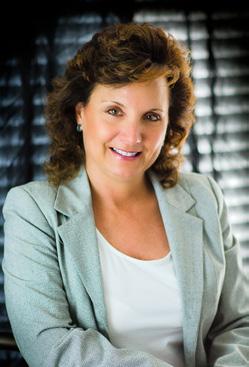
DOROTHY COCIU, RHU, REBC, GBA, RPA is VP, CDOROTHY COCIU is the president of Advanced Benefit Consulting, Anaheim, Calif. and VP of Communications for the California Agents & Health Insurance Professionals (CAHIP, formerly CAHU). She is the host of the Benefits Executive Roundtable Podcast and is a frequent contributor to CalBroker magazine and other written publications. She is a benefits broker/agent specializing in mid-size and large group health plans, ERISA, ACA, CAA, TiC and other areas of health plan compliance.
She is also a frequent CE class instructor for NAHU, CAHIP, its local chapters, SIIA and other professional associations.
Contact:
714-693-9754 x 3
www.advancedbenefitconsulting.com
dmcociu@advancedbenefitconsulting.com

Consolidated Omnibus Budget Reconciliation Act (COBRA) Insurance
Under the Consolidated Omnibus Budget Reconciliation Act (COBRA), a covered group health insurance plan must offer an opportunity to continue health plan coverage to each qualified beneficiary who would otherwise lose coverage under the plan as a result of a qualifying event.
Failing to send appropriate COBRA notices, as required by law.
COBRA health insurance requires that coverage, in terms of benefits, deductibles, and coverage limits, be identical to similarly situated active plan participants. Changes in the plan for active participants (for example, increased deductibles, changes in coverage limits or benefits, termination of plan) also will affect those participating through COBRA.
Likewise, whenever an active employee can make changes in coverage or add dependents, such as at annual open enrollments, so can all qualified beneficiaries. All notices you provide to active employees should also be provided to all qualified beneficiaries.
Consolidated Omnibus Budget Reconciliation Act (COBRA) contains clear criteria to determine whether employees enrolled in your group health plan(s) are eligible for COBRA insurance coverage. Medical Spending Accounts (MSAs) and some regionspecific group health plans require special consideration.
Consolidated Omnibus Budget Reconciliation Act (COBRA) coverage applies to employers with 20 or more employees. However, calculating the number of employees can be a complex matter based on such issues as full- or part-time employment, changes in workforce numbers over time, and acquisition of other businesses.
Employees who are enrolled in your health care plan the day before a qualifying event are usually eligible for Consolidated Omnibus Budget Reconciliation Act (COBRA) coverage.
There are six specific events resulting in loss of health plan coverage that can trigger an employee's eligibility for Consolidated Omnibus Budget Reconciliation Act (COBRA) coverage. It is important not only to be aware of the six events, but also to consider them in light of other conditions such as the occurrence of multiple qualifying events, the effects of business reorganizations, and the relationship between family and medical leaves and COBRA. Factors that can affect COBRA insurance coverage eligibility include:
Divorce and remarriage
Retirement status
Medicare entitlement, and Reason for termination
COBRA Notice Requirements
The law requires that you send several Consolidated Omnibus Budget Reconciliation Act (COBRA)-related notices to employees and qualified beneficiaries, particularly when their health plan coverage begins and ends, as well as when they are not eligible for continuation of coverage. You must also notify the COBRA health insurance plan administrator of the details regarding individual employees' qualifying events. Employees are required to notify you when a qualifying event occurs, and you can establish reasonable procedures for employees to provide notice.
Qualified beneficiaries have 60 days in which to elect or waive Consolidated Omnibus Budget Reconciliation Act (COBRA) coverage, and it is essential that you make a good faith effort to ensure that beneficiaries receive election notices in a timely fashion. Also, there are some employees who can take advantage of a second chance to elect coverage if their jobs are affected by increased imports of competing products, as defined by the Trade Act of 2002.
Consolidated Omnibus Budget Reconciliation Act (COBRA) regulations provide clear guidance on allowable premium amounts and premium due dates. They also provide guidance on how to handle insufficient premium payments.
Consolidated Omnibus Budget Reconciliation Act (COBRA) coverage terminates either at the end of the coverage period required by law, or when one of four specific events occur. California law also requires the extension of COBRA coverage under certain conditions. Other issues to consider in relation to termination of coverage include Health Insurance Portability and Accountability Act (HIPAA) requirements, Employee Retirement Income Security Act (ERISA) provisions, and beneficiary options for converting COBRA coverage to an individual health care policy.
Final Consolidated Omnibus Budget Reconciliation Act (COBRA) regulations explicitly prohibit certain acts on the part of an employer, such as reducing or eliminating health coverage in anticipation of a qualifying event.
You risk serious financial penalties if you do not comply with Consolidated Omnibus Budget Reconciliation Act (COBRA) regulations, even if your error was unintentional. California Continuation Benefits Replacement Act (CalCobra)
The California Continuation Benefits Replacement Act of 1997 (Cal-COBRA) is an expansion of federal Consolidated Omnibus Budget Reconciliation Act (COBRA) coverage. It requires insurance carriers and Health Maintenance Organizations (HMOs) to provide COBRA-like coverage to employees of smaller companies (2 to 19 employees) in California, who are not subject to federal COBRA provisions.
Certain individuals are not eligible for California Continuation Benefits Replacement Act of 1997 (CalCOBRA) coverage, such as those who become entitled to Medicare benefits or fail to give timely notice of qualifying events.
If an enrollee is entitled to less than 36 months of continuation coverage under COBRA health insurance and has exhausted continuation coverage under COBRA, California health plans must offer the enrollee the opportunity to continue coverage for up to 36 months from the date the enrollee's continuation coverage began.
The California Continuation Benefits Replacement Act of 1997 (Cal-COBRA) requires that certain notices about coverage be provided to insurance carriers and employees at certain times.
The California Continuation Benefits Replacement Act (Cal-COBRA) specifies the amount a qualified beneficiary can be charged for continuation coverage, how long the continuation coverage can last, and when coverage can be terminated.
HRCalifornia subscribers have access to several tools and services that help those who manage human resources to work through COBRA and Cal-COBRA issues, including:
COBRA Rights - Acknowledgment of Receipt of Notification »
Provide this form to an employee if the employee has coverage for himself/herself plus any other family members and coverage is being ended due to termination of employment or reduction in hours. You need to send out additional COBRA notices to those individuals indicated on the form who do not reside with the employee.
COBRA Administration Guide »
Begin using this COBRA administration guide when an employee is hired and refer back to it when a qualifying event occurs.
Cal-COBRA - Notice to Carrier »
Send this Cal-COBRA notice to the health/disability insurance carrier when any qualified beneficiary becomes subject to Cal-COBRA because of a qualifying event.
Cal-COBRA - Notice to Employee »
Send this notice to an employee at least 30 days before a current group benefit plan terminates because of a change in group plans. You must send information about the new group benefit plan, benefits information, premium information, enrollment forms, instructions, etc., necessary to allow the qualified beneficiary (employee) to continue coverage.

Have you reached the point to consider your plans for the future?
Do you know what your book is worth to a buyer?
At any point when you are ready for a Q&A, we are happy to help you.

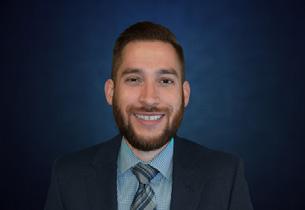

Contact Health Broker Collaborators to gain insights and a no obligation review of your client’s tax, financial, and legal issues. SME's can help in planning and closing insurances cases.
Speak with broker friendly Subject Matter Experts
Collaborate to find solutions that cause insurance to be sold and share in the success
Enjoy working with professionals who collaborate with you to resolve client planning needs
REASONS TO CALL our SMEs:







With liberal underwriting standards and unique flexibility, the Failure To Survive coverage provides a death benefit, and can accommodate impairedrisk cases that would typically be declined or postponed by traditional market carriers.
• Contract Indemnity FTS
• Key Person FTS
• Buy/Sell FTS
• Business Loan FTS
